Photo by: Graphic by Jessica Viscius
Holiday music gets a bad rap, understandably. The way it saturates radio and commercial spaces, seemingly starting earlier each fall, it can feel inescapable—and a lot of it can be trite. So it’s easy to feel disenchanted. But when it came time to put together a list of our holiday favorites, we were surprised that even some of our most dedicated freaks of outré sound still had a warm place in their hearts for this music. So we polled our contributors for the best and most interesting holiday tracks, and here are the results.
But first, here to share her earliest holiday memories is a legend of Christmas music...
SANTA ON MY MIND
By Ronnie Spector
There are two passions that have remained with me since I was a little girl growing up in Spanish Harlem: performing, specifically singing rock’n’roll onstage, and Christmas. I don’t recall which came first.
I guess entertaining my family did. My uncle would put a lightbulb in an old Maxwell House coffee tin; that would be my spotlight and I would jump up on the table and sing. I was 5 years old.
Around that time, I remember reading a book about Christmas in our apartment. On the page was Santa with his snow-white beard, in his red suit with fluffy white trim, sitting on his sleigh with a giant sack of toys. Wow! I flipped a few more pages, and I saw Santa’s black boots coming down the fireplace. Oh no—I didn’t understand this. How would I get my toys if we didn’t have a chimney, let alone a fireplace? I jumped up, ran out of the room, calling, “Daddy, Daddy!” My dad answered: “Yes, Butchie?” I asked frantically, “How is Santa going to get here with my toys, Daddy? We don’t have a fireplace.” Daddy looked at me and said, “Don’t worry, Butchie, when Santa is in New York City, he uses the fire escape.” Oh boy, what a relief! I ran into the kitchen, got out the milk and cookies, put them out on the fire escape, and went to bed dreaming of Santa. And I have been dreaming ever since.
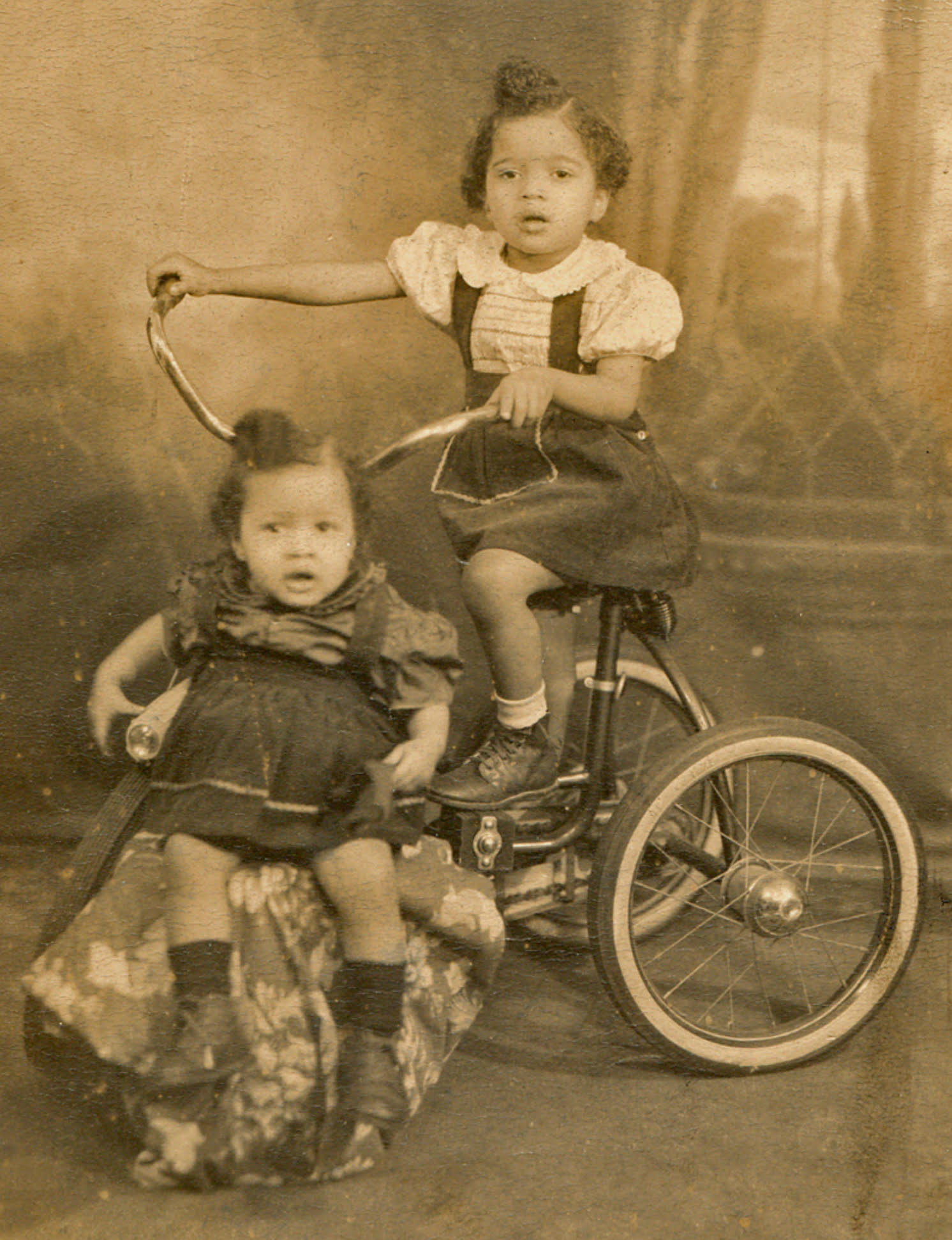
Ronnie, left, with her sister (and future fellow Ronette) Estelle on tricycle
Every September, I started getting the Christmas itch. I couldn’t wait to go with my dad over to Broadway to pick out our tree, and then I made my mom take me down to Macy’s so I could sit on Santa’s lap. There was a long line of people—I couldn’t even see Santa. My mom was a waitress, and on her feet all day, but she didn’t want to disappoint me. When I finally got my chance, wearing my red dress, I’d jump onto Santa’s lap and start telling him about the doll I wanted for Christmas. Then he told me I would get it if I was a good girl—but instead, once, I got a Kewpie doll. Oy!
Back in the late ’40s, the Christmas music on the radio was all standards, such as Frank Sinatra and Bing Crosby. My parents liked that, but not me. I think the first Christmas record I liked was “White Christmas” by the Drifters. It tells you both things you need to make a great Christmas record: a good singer and a great arrangement. You hear that deep voice of Bill Pinkney of the Drifters in the beginning, and then, all of a sudden, that joyful and amazing voice of Clyde McPhatter coming in: “I-yay-yay I’m dreaming…”
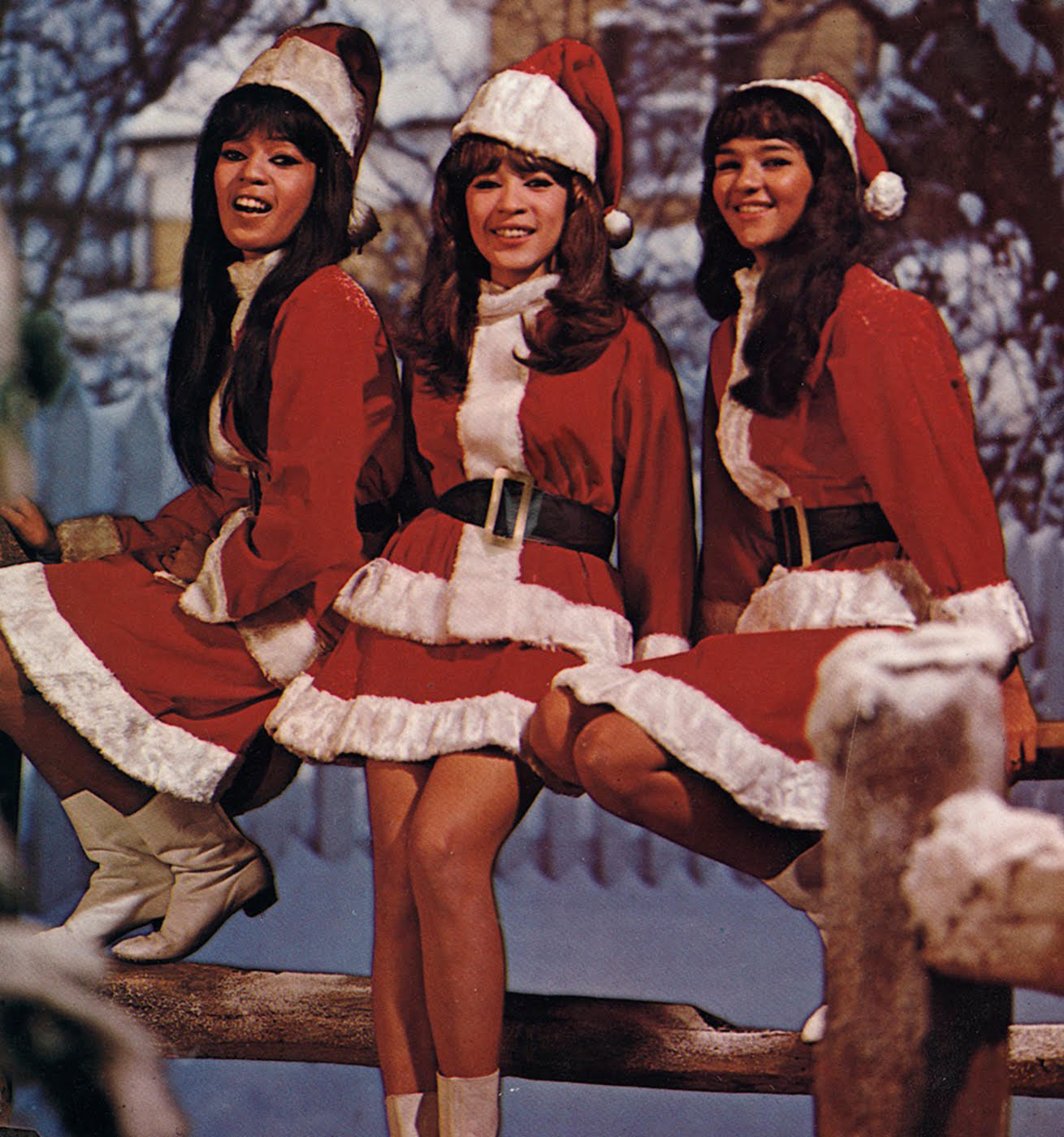
The Ronettes' cover of Elegant Teen magazine, 1966
I was lucky enough to record about nine or 10 Christmas records, and six of them get played on the radio still. But it’s the ones I recorded with my group the Ronettes in 1963 that will probably outlive me, and it’s because of the incredible arrangements of Jack Nitzsche. Just listen to “Sleigh Ride”—that says it all.
Just like when I was a kid, I still wait for Christmas each year—for the brightly colored lights, Frosty the Snowman, and Santa. And the best Christmas gift for me is when I am driving at home in Connecticut to get milk and cookies for Santa, I turn on the radio and hear my version of “I Saw Mommy Kissing Santa Claus”…and I think to myself, Santa has been pretty good to me all these years.
Ronnie Spector is a singer-songwriter, author, and the lead vocalist of the Ronettes.
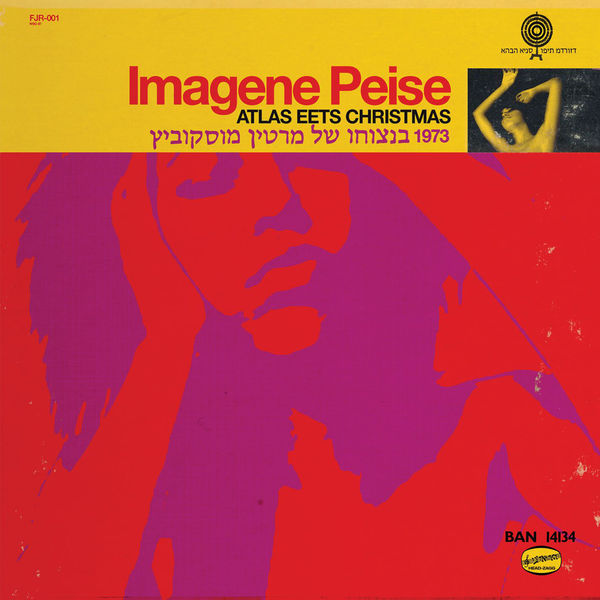
“Silver Bells”
50
The Flaming Lips may employ roadies dressed like Santa Claus and have a high-concept, low-budget sci-fi film called Christmas on Mars, but they only have one holiday album—sort of. Released initially under the name Imagene Peise, Atlas Eets Christmas treats “Silver Bells” and other familiar tracks like the mid-century pop standards they are. Centered around the piano of Steven Drozd and blurred together by a fake vinyl crackle, other accoutrements like mellotron, sitar, and bells leak in subtly, as if barely there at all.
According to the liner notes, “Peise” released his collection of “Iraqi piano jazz” before committing suicide in 1978; the Lips’ weirdness, however, remains eternal. Like a prankster trying to keep a straight face, or strange hallucinations flickering at the periphery of one’s vision, Atlas Eets Christmas sounds beamed in from the universe next door, where the holiday traditions are all the same but the color scheme is different. –Jesse Jarnow
Listen: The Flaming Lips/Imagene Peise: “Silver Bells”
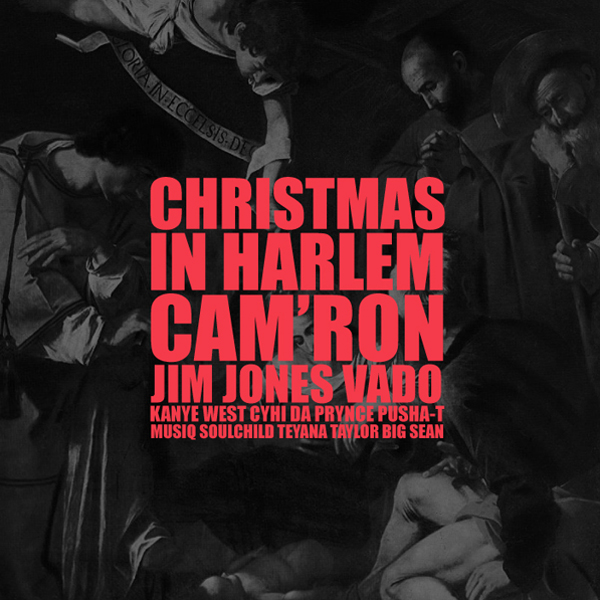
“Christmas in Harlem” [ft. Cam’ron, Jim Jones, Vado, Cyhi da Prynce, Pusha T, Musiq Soulchild, Teyana Taylor and Big Sean]
49
This is arguably the best “holidays come to the ’hood” song of all time (sorry, “Christmas in Hollis”). The soulful swag of Teyana Taylor’s vocals glazing Kanye West’s Marvin Gaye-sampling production might lead you to believe this 2010 posse carol exists outside of time (and outside of the internet—the original extended cut is nowhere to be found online, replaced with Kanye’s retail non-Dipset-and-friends edit), that it’s been preserved inside a snowglobe where Cam’ron braves the swirling flakes in a white fur cape and ushanka as he strolls regally past a miniature Apollo Theatre. Jim Jones peers from a shop window in his Hennessy-stained Santa suit, which hangs open to reveal his Dipset chain. Despite Jones’ red-rimmed eyes, he is a reassuring presence, making sure all the kids have toys, growling, “Let’s make a toast ’cause Christ is born/We gon’ party ’otil the lights come on.” Whatever your spiritual outlook or geographic location, just shake this little ball of silvery bling any time you need to be reminded: It’s a wonderful night to be alive, baby. –Edwin “STATS” Houghton
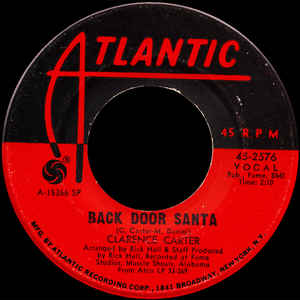
“Back Door Santa”
48
Clarence Carter worked his way up the ranks at the legendary Muscle Shoals soul studio into Atlantic Records’ roster; there, his pleading love songs (“Slip Away,” “Too Weak to Fight”) cracked through the R&B charts and into pop crossover fame. His entry for Atlantic’s Soul Christmas collection is more Penthouse letter than romance novel, though. It’s a hectic, slyly salacious effort: Alongside a blaring horn intro (that would later be sampled on Run-DMC’s “Christmas In Hollis”), Carter packs military drum rolls, casual down-home asides (“Lookit here!”), classic blues progressions, and enough raunchy imagery to stuff a stocking. (He flits between embracing the “back door,” giving ladies his “presents,” and needling St. Nick for only coming once a year.) If you’re sick of Christmas commercialism, Carter—who still tours today at 80 years old—can be doubly appreciated for his randy embrace of the season. –Jason Gross
Listen: Clarence Carter: “Back Door Santa”
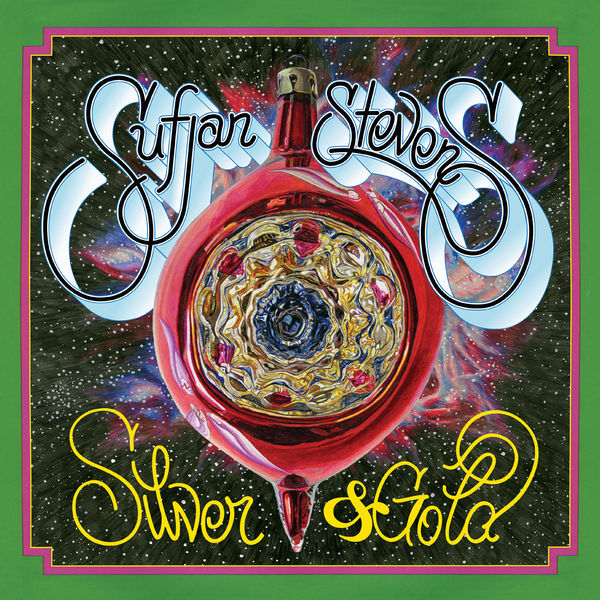
“Christmas in the Room”
47
Since 2001, Sufjan Stevens has recorded and released more than 100 Christmas songs. But the Christian artist isn’t just reeling off reams of standards to satiate the faithful, or cashing in with big band renditions like some kind of Perry Como in a tight thrift-store tee. Instead, he often spikes his holiday tunes—both originals and covers—with the season’s signature blend of conflicted feelings. These odes bring out the comforting smell of pine needles along with the dampness of slushy socks, the merry warmth of generosity as well as the nagging nostalgia of those childhood revelries of yore.
“Christmas in the Room,” Stevens’ best Yuletide original, is about a couple trying to conjure the holiday spirit without all of the typical trappings: “No parties planned, no place to go/It’s just the two of us alone.” The bare instrumentation matches the mood, with Stevens’ acoustic guitar soundtracking a Christmas without mistletoe, malls, silver bells, Santa, or even family. The idea seems so simple and yet so stark: The holiday is what you make of it, and the spirit can be found in another person, within four walls. –Ryan Dombal
Listen: Sufjan Stevens: “Christmas in the Room”
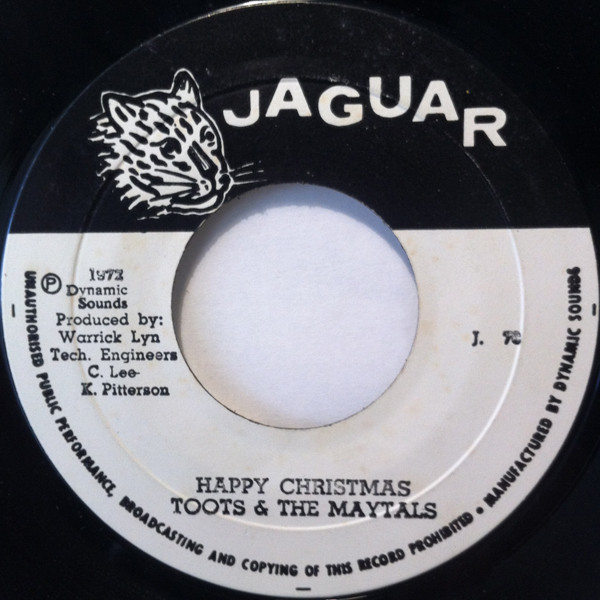
“Happy Christmas”
46
Christmas is bashment time in Jamaica, and every holiday season sees a wave of new tunes and choreography unveiled at the massive dances held in celebration. The result is a deep catalog of island holiday classics spanning decades and styles, ranging from reggae-fied versions of the standards to original badman carols.
Toots & the Maytals’ “Happy Christmas” stands head, shoulders, and lung-power above the rest. (It’s on the Dynamic Sounds compilation Christmas in the Tropics—worth tracking down for the cover alone.) The country chapel brand of gospel that powers Toots lends itself perfectly to the Christmas theme; his booming Pentecostalist fervor, underpinned by church bells and skanking guitar, is guaranteed to transform the stiffest office holiday party into a hand-clapping revival meeting. –Edwin “STATS” Houghton
Listen: Toots & the Maytals: “Happy Christmas”
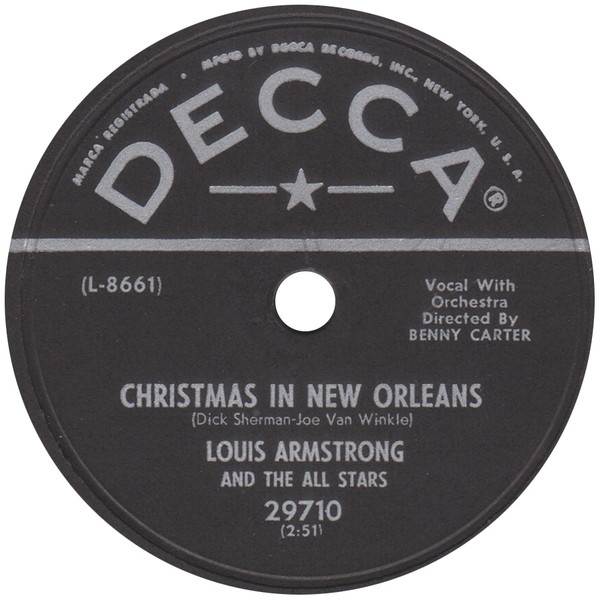
“Christmas in New Orleans”
45
Louis Armstrong recorded several holiday numbers—this one, written by Richard Sherman and Joseph Van Winkle, has the distinction of containing some of Satchmo’s ecstatic, bluesy swagger. (Not always a guarantee, in the field of theme and novelty recordings.) Officially a collaboration between the jazz virtuoso and Benny Carter’s orchestra, this performance is mostly led by Armstrong’s “All Stars” ensemble; that working band had just produced two buoyant LPs for Columbia, and the support they offer Armstrong here keeps the track from becoming too cutesy. Pianist Billy Kyle plays the blues behind Armstrong’s gravelly verses, and drummer Barrett Deems provides subtle but authoritative swing during the bandleader’s trumpet solo. Thirty years after Armstrong changed jazz forever with his first singles, his technique here proves that he was still a gift not only to the sound of New Orleans but to the rest of the world—and to the holidays, to boot. –Seth Colter Walls
Listen: Louis Armstrong: “Christmas in New Orleans”
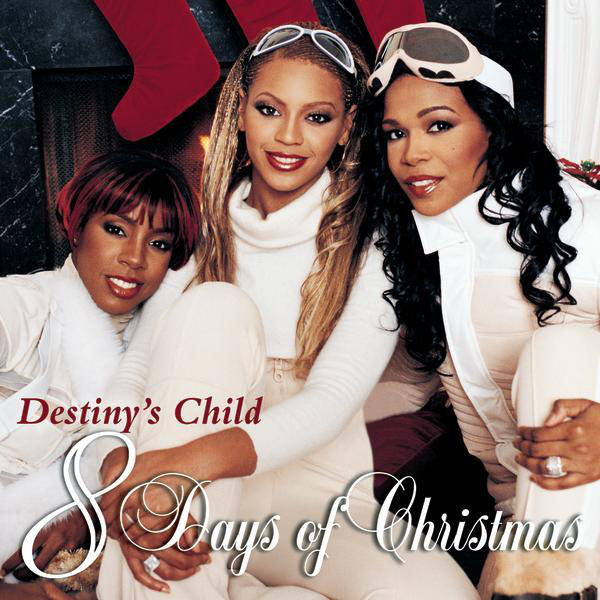
“Carol of the Bells a.k.a. Opera of the Bells”
44
In 2001, Destiny’s Child were the biggest girl-group in pop, presiding with three-part harmonies, deconstructed R&B, and sharp celebrations of autonomy and self-love. That spring, the trio released their third studio album, *Survivor—*their first with the classic lineup of Beyoncé Knowles, Kelly Rowland, and Michelle Williams, and an adventurous blend of hip-hop, soul, blues, and gospel.
During a year that took the trio around the world, they also found time to record 8 Days of Christmas, a 12-track album that mixes holiday standards with originals. It’s similarly wide-ranging, full of joy and tension, rich harmonies, and percussive vocal lines. The singers share lead duties, and it’s also one of the first times the world heard from Beyonce’s 15-year-old sister, Solange, in a smooth take on “Little Drummer Boy.” Its highlight is the group’s epic a cappella rendering of the ominous Christmas classic “Carol of the Bells,” here retitled “Carol of the Bells a.k.a. Opera of the Bells.” In its grand sweep, Destiny’s Child belt out lush chords and bustling staccato melodies, weaving in and out of each other with weight and light. It’s 8 Days of Christmas’ closing track, but an apt entry point into an essential collection. –Liz Pelly
Listen: Destiny’s Child: “Carol of the Bells a.k.a. Opera of the Bells”
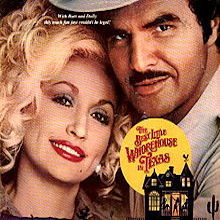
“Hard Candy Christmas”
43
Dolly Parton has recorded enough holiday material to keep an enthusiast occupied until Valentine’s Day, but her cover of “Hard Candy Christmas,” written by Carol Hall for the 1978 musical The Best Little Whorehouse in Texas, feels particularly potent. It’s not an overt holiday song, but ever since Parton recorded the track for its film adaptation, it has become a country staple in December, and its meditation on keeping a stiff upper lip is worth internalizing as 2016 comes to a long-awaited end.
What starts as an acoustic dirge about uncertainty becomes a twangy anthem for accepting and adapting to changed circumstances: “I'll be fine and dandy/Lord it's like a hard candy Christmas/I'm barely getting through tomorrow/But still I won't let/Sorrow bring me way down,” she muses. While some of the best holiday tracks focus on the sneaky sadness of forced holiday cheer, Parton’s tremulous declaration adds some much-needed optimism to what can be a wholly depressive season. Plus, frankly, there just aren’t enough Christmas songs about prostitutes. –Cady Drell
Listen: Dolly Parton: “Hard Candy Christmas”
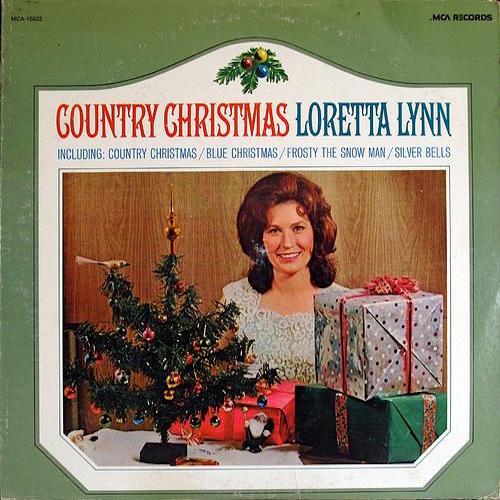
“To Heck With Ole Santa Claus”
42
The always prolific Loretta Lynn released three albums in 1966—including her chart-topping, You Ain’t Woman Enough that September. The following month, she released Country Christmas, which was filled mostly with staples like “Away in a Manger” and “White Christmas.” But the enduring song from the release is one of a handful of original compositions written by Lynn, “To Heck With Ole Santa Claus.”
Twangy and brimming with country sass, “To Heck With Ole Santa Claus” is explicitly about wishing ill will on the chimney-hopper who holds out on bringing her presents. More subtly, it’s a song about seasonal disappointments, holiday childishness, and not getting the thing you hoped for most on Christmas Day. As Lynn sings, “When he goes dashin’ through the snow, I hope he falls,” it’s almost pouty. She is snotty and petulant, with snappy quips that seek bodily harm as cosmic justice for being duped, but she’s redeemed by her bittersweet cheekiness. –Sheldon Pearce
Listen: Loretta Lynn: “To Heck With Ole Santa Claus”
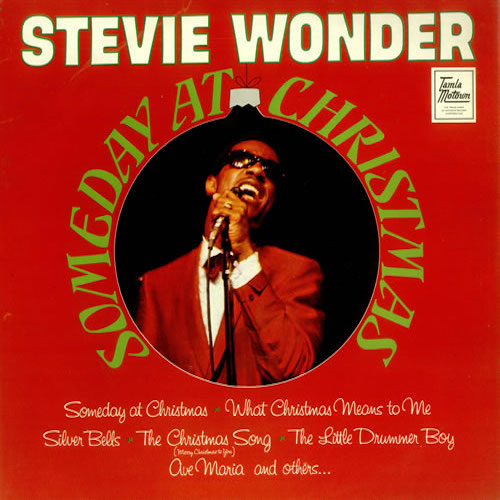
“What Christmas Means to Me”
41
“What Christmas Means to Me” is Wonder’s signature Christmas statement; in it, he seeks to define nothing less than Christmas spirit itself. It was co-written by Anna Gordy Gaye—elder sister of Motown founder Berry Gordy, and inspiration for her ex-husband Marvin Gaye’s Here, My Dear—as well as George Gordy and Allen Story. The song was released on Wonder’s only Christmas album, Someday at Christmas, alongside such other Yuletide staples as “The Little Drummer Boy” and “Silver Bells.”
Wonder sets a placid scene in “What Christmas Means to Me”: carolers trudging door-to-door through the snow, the fluorescent glow of ornaments strung together, filling the tree with “angel hair.” These things remind most of us of Christmas—the sights, sounds, and smells surrounding any nativity scene, the warmth emanating from hearth and home. But those are set dressings for more intangible things Wonder craves, in which his vocals truly soar: “Even though I love ya madly/ It seems I love you more/ And little cards you give me/ Will touch my heart for sure.” In his joy, he lands on the feelings we all revel in from the holidays: being eager, being giddy, being loved. –Sheldon Pearce
Listen: Stevie Wonder: “What Christmas Means to Me”
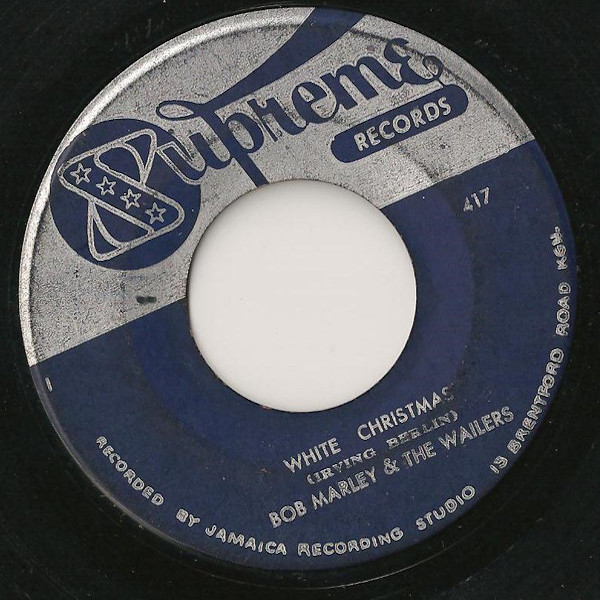
“White Christmas”
40
You could be forgiven for reading this cover title as an ironic selection from the band, given the amount of spiritual energy both reggae and Rastafarianism have invested in uncoupling the equation of “white” with purity and “black” with sin. But the earnest, vulnerable rasp of a young Bob Marley sandpapers away any possibility of ironic distance when the needle drops on this rocksteady gem. The slow, doo-wop and jazz-inflected skank of the Wailers in their The Birth of a Legend phase transports listeners of any nationality to the simpler optimism of post-independence Jamaica, tinged with the wistfulness of a teenager in love—or in this case, one’s who’s never seen snow, dreaming of postcard-perfect prosperity. –Edwin “STATS” Houghton
Listen: Bob Marley & the Wailers: “White Christmas”
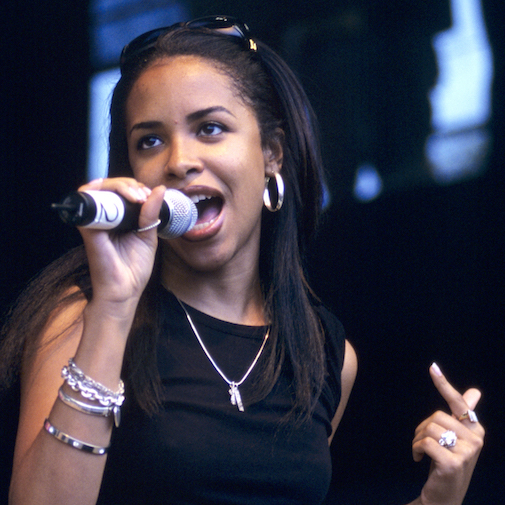 Aaliyah performs in 1998; Photo by Tim Mosenfelder/Getty Images
Aaliyah performs in 1998; Photo by Tim Mosenfelder/Getty Images
“The Christmas Song”
39
No other singer could deliver this definitive version of “The Christmas Song,” could combine the understated warmth of Nat King Cole’s 1961 recording with the heartbreaking power of a little girl singing in church. The 18-year-old Aaliyah’s flawless, subtly ornamented performance for First Couple Bill and Hillary Clinton is laced with revelations. First: The core of her pop success, underneath all the tomboy clothes and edginess, rested on Whitney Houston-levels of vocal talent and control. Another: While previous versions of the tune may still be grandfathered in, she effectively retired its jersey with this performance. By the time Aaliyah dances around the notes of the last “to you” in perfect pitch, even Santa Claus believes in her. –Edwin “STATS” Houghton
Listen: Aaliyah: “The Christmas Song” [Live]
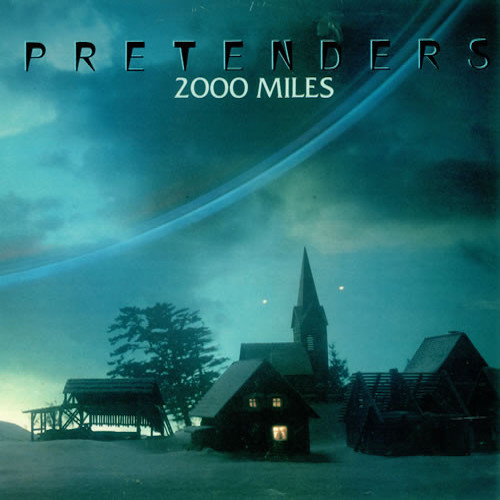
“2000 Miles”
38
“2000 Miles” isn’t a Christmas song in the traditional sense. It isn’t even as much about Christmas as it is the many things the holiday can represent symbolically for someone in mourning: a period of rebirth, a catalyst for reminiscence, a minefield of triggers, or all three. More than anything, though, it’s about the insurmountable distance of loss, and the intense emotional state of managing grief while surrounded by revelers.
Chrissie Hynde wrote “2000 Miles” after Pretenders’ founding guitarist James Honeyman-Scott died of heart failure induced by cocaine use. The song seems to eulogize the late musician, likening a nostalgic, dreamlike state to that Christmas feeling. “In these frozen and silent nights/Sometimes in a dream you appear/Outside under the purple sky… It felt like Christmas time,” Hynde sings. It’s a touching tribute to holidays spent missing someone just out of reach. –Sheldon Pearce
Listen: The Pretenders: “2000 Miles”
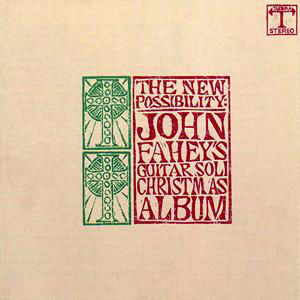
“What Child Is This?”
37
Who could accomplish the seemingly impossible feat of making Christmas music sound strange and alien? Who could scour off the mustiness of Hallmark cards and plastic wreaths and bring back the scent of barn hay, the urgency of a huddled family, the auspiciousness of a fragile birth? John Fahey’s inimitable guitar arrangements of Christmas standards sound like a church we’ve never entered, the one united in profound, inexpressible feeling.
“What Child Is This?” in particular brings this mythical feeling to the fore: It is slowed down to a near-hallucinatory tempo, as if it is being distantly remembered instead of merely played, and given a near-funereal pallor. It conjures the frightening seriousness that some of this music can impart to little children, with its transcendent and apocalyptic overtones. What was once a jingle is once again a draft of cold air from the beyond. –Jayson Greene
Listen: John Fahey: “What Child Is This?”
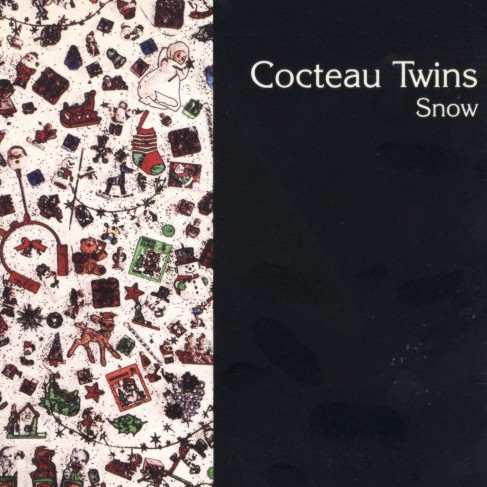
“Frosty the Snowman”
36
Few musical styles conjure the shimmering feeling of snowfall like dream-pop, and few artists have painted dream-pop in more mesmerizing abstractions than Cocteau Twins. In the early 1990s, after releasing their landmark album Heaven or Las Vegas, the group moved to London to work on the album Four-Calendar Café. In that three-year span, they released only two songs, including this holiday staple, a take on “Frosty the Snowman” that beams with the Scottish group’s typically lush, droning guitars and translucent harmonies.
According to bassist Simon Raymonde, after he wrote down the lyrics and showed them to Elizabeth Fraser, they had a good laugh: “As we were going through it, I was listening to Liz’s reactions and thinking, this is never gonna get done. She was going, ‘He’s a very happy soul’—me sing that?! No way, I could not in a million years.” But, in a true holiday miracle, the band made it their own. Their reinvention naturally feels a bit heavier than the usual chirpy children’s tune: It’s a surreal, slow story-song about a happy, jolly soul running to escape the sun before it melts him away. It’s a sad goodbye, really, under the sheen of smiles and snowflakes. –Liz Pelly
Listen: Cocteau Twins: “Frosty the Snowman”
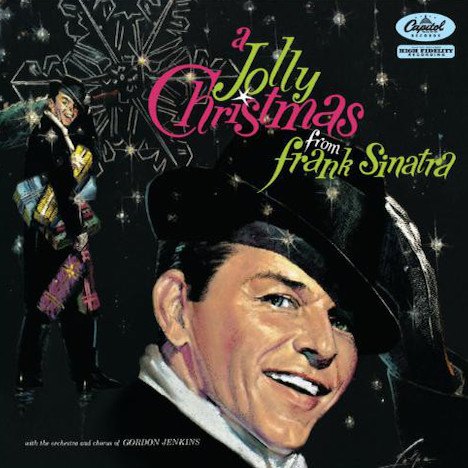
“Have Yourself a Merry Little Christmas”
35
Frank Sinatra recorded “Have Yourself a Merry Little Christmas” three times in 15 years. For the first, which appears on 1948’s Christmas Songs by Frank Sinatra, Ol’ Blue Eyes covers Judy Garland’s amended version from the 1944 film Meet Me in St. Louis; the actress had found several of the original lyrics too morbid (“Have yourself a merry little Christmas/It may be your last”) and so composer Hugh Martin sweetened up the verses.
For Sinatra’s second take, in 1957, it was he who requested that the writers change a few lines; Sinatra asked Martin to tweak the “we’ll have to muddle through somehow” bit. According to Martin, Sinatra said, “The name of my album is A Jolly Christmas. Do you think you could jolly up that line for me?” So it changed to “hang a shining star upon the highest bow.” Sinatra’s third and final spin, polished and perfected from these two prior efforts, appeared in the 1963 anti-war film The Victors, and it’s the iconic one. “Have Yourself a Merry Little Christmas” remains a holiday classic thanks to Sinatra’s gentlest croon yet, and the song’s sentimental, ever-renewable gratitude for family and home. –Quinn Moreland
Listen: Frank Sinatra: “Have Yourself a Merry Little Christmas”
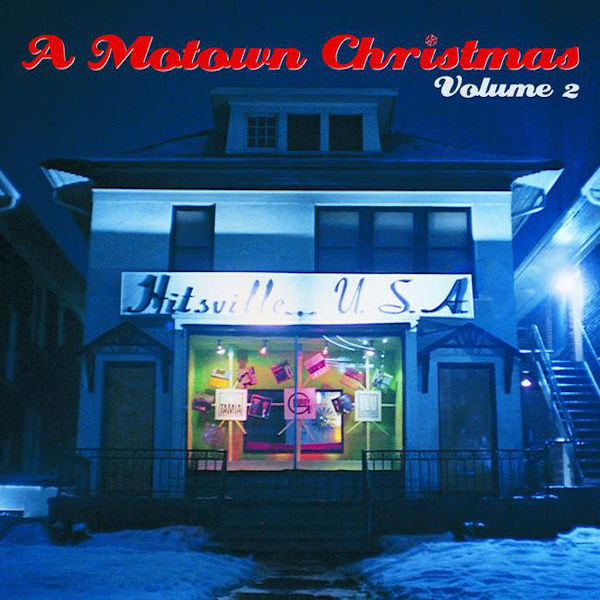
“Purple Snowflakes”
34
About 30 years after releasing the label compilation A Motown Christmas, which featured nearly the entire star-studded roster of Motown Records in the early ’70s, the imprint issued a second volume featuring more holiday cuts of the era from the Supremes, the Temptations, the Jackson 5, and others. Absent on the first volume, Marvin Gaye appears twice on the sequel with his cover of “The Christmas Song” and an original called “Purple Snowflakes.” The latter, his standout, is as much about holiday remembrances as it is about ice crystals.
“Purple Snowflakes” is as unique and striking as its subjects; in its subtle soul energy and delicate arrangements, it mimics a quiet winter evening, a scene where flurries descend softly into a frozen world. Gaye charts their paths slowly from the heavens into a blanket of white; he’s impressed by their intricate designs, as well as his company. “I’m sure that snowflakes fall from the gloom,” he sings. “I will always remember this night/ Here with you.” There’s something truly enchanting about his voice in that moment, this snow globe of his memory unfolding. –Sheldon Pearce
Listen: Marvin Gaye: “Purple Snowflakes”
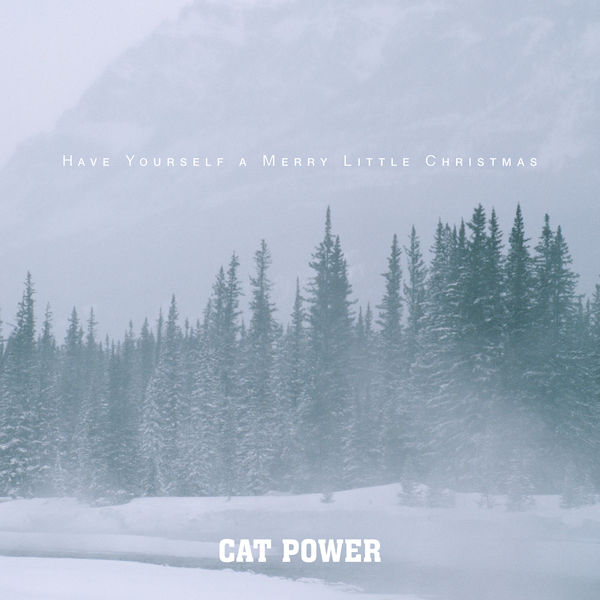
“Have Yourself a Merry Little Christmas”
33
Chan Marshall didn’t need images of hugging families and snowy suburban festivities to make this track a tearjerker; however, when this cover soundtracked them in a 2013 Apple ad, it worked quite well. Marshall’s husky vocals are unhurried and unadorned, her thoughtful drawl detailing intimacies while conveying empathy for those shuddering outside them; the spare piano and lone violin beneath highlight each striking cadence. In a standard usually stuffed with wide orchestrations and grand choruses, Marshall takes the contrarian path, paring so deeply to the base melody that it becomes fresh again, and a hair-trigger to tears. Almost six years after Marshall released Jukebox—her polished collection of soul, country, and blues covers—her effortless spin through “Have Yourself a Merry Little Christmas” suggested what a holiday album from her might entail: beauty, reflection, and true, thawed-out soul. –Stacey Anderson
Listen: Cat Power: “Have Yourself a Merry Little Christmas”
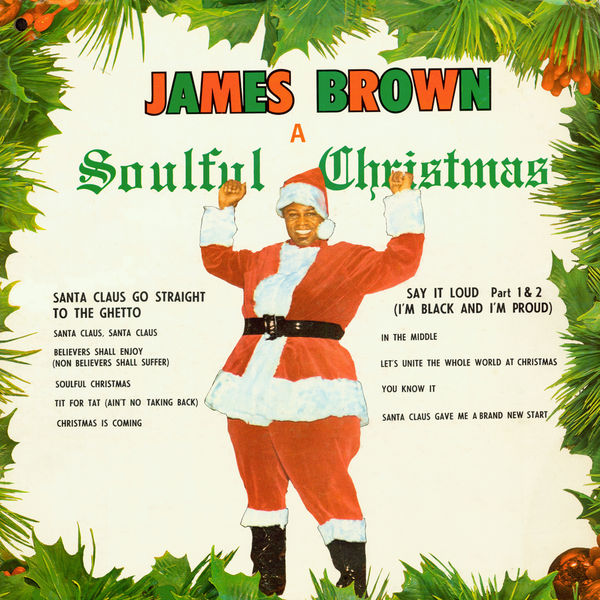
“Santa Claus Go Straight to the Ghetto”
32
James Brown crossed over from the Godfather of Soul to Godfather Christmas several times, releasing three complete seasonal albums. He wasn’t always a master of staying on-message; the funkiest of those tracks, “Go Power at Christmas Time,” ends up being less about general cheer and more a hilariously random combination of shout-outs to Bobby Byrd and advertisements for his appearance in the Ski Party movie. But Brown sticks with the holiday plot, gloriously, on this 1968 plea for Santa to make his first stop at the projects. There are still call-outs—“Tell him Hank Ballard told you so!”—but sympathy runs deep: “You know that I know what you will see/’Cause that was once me,” the black-and-proud icon tells the red-and-proud benefactor, before co-writer/sax man Pee Wee Ellis wraps it up in a bow and a “Jingle Bells” riff. Brown played Santa’s helper in real life that year, giving out 3,000 gift certificates for Christmas meals to the needy in New York, according to a Jet magazine report. Sometimes you’ve got to step in yourself to “hit it!” when you’re not sure Saint Nick will. –Chris Willman
Listen: James Brown: “Santa Claus Go Straight to the Ghetto”
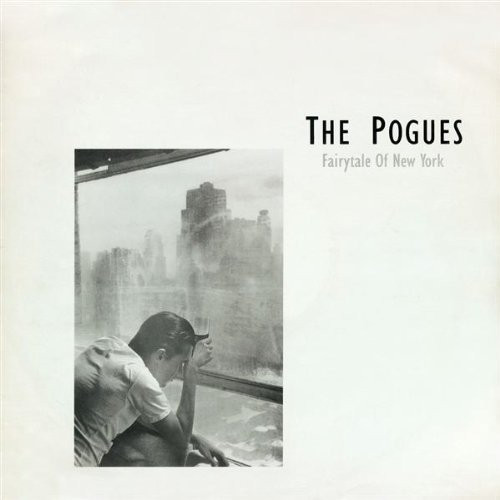
“Fairytale of New York”
31
This isn’t just a duet; it’s a full off-Broadway musical, really, in four-and-a-half minutes. Baby, it’s cold inside the drunk tank from which Shane MacGowan shares his Christmas memories of slightly better times, when he still had a woman around to call him a “cheap lousy f****t” (among the other lines that vex would-be cover artists). Recording it proved tricky: the intended female lead, the Pogues’ own Cait O’Riordan, had just left the band, and her proposed replacement Chrissie Hynde had not yet been drafted. Producer Steve Lillywhite found the perfect sparring partner right under his nose: his wife, the late Kirsty MacColl, a UK star in her own right. She adds the proper notes of combative wistfulness in the flashback scenes, helping play them for laughs, but also gets chillingly sober when she retorts to MacGowan’s Brando-esque “I could have been someone” with a cold splash of water: “Well, so could anyone.”
What does all this have to do with Christmas? The universality of alcohol and memories, mainly—and a bunch of NYPD officers who form a choir to serenade their captive. No wonder this UK hit has charted there every December since its release, and found a pretty good following in the land of its inspiration, too. –Chris Willman
Listen: The Pogues ft. Kirsty MacColl: “Fairytale of New York”
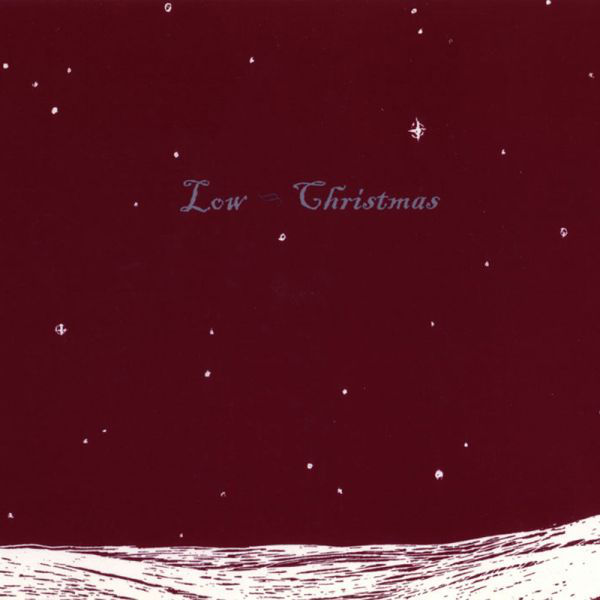
“Little Drummer Boy”
30
In 1999, Low were at the peak of their powers as a slowcore unit, having mastered the art of minimal music that hits with maximal force. They’d already released a few stray Christmas singles, but as the millennium came to a close, they honored the season with a proper record, an eight-song EP that has since become a holiday classic. There are no weak moments on the release, and some of the best songs are Low’s originals—including “Just Like Christmas,” possibly their catchiest and most upbeat tune.
For all the record’s spare beauty, though, their aching version of “Little Drummer Boy” is the one for the ages; it’s built around a drone and overlaid with a fine mist of reverb and processing that evokes both snowfall and shoegaze, soft as snow but warm inside. Its arresting beauty didn’t go unnoticed by advertisers (an appearance in a Gap spot popularized it beyond the indie set), but commercial association has not dimmed its heart-expanding force. –Mark Richardson
Listen: Low: “Little Drummer Boy”
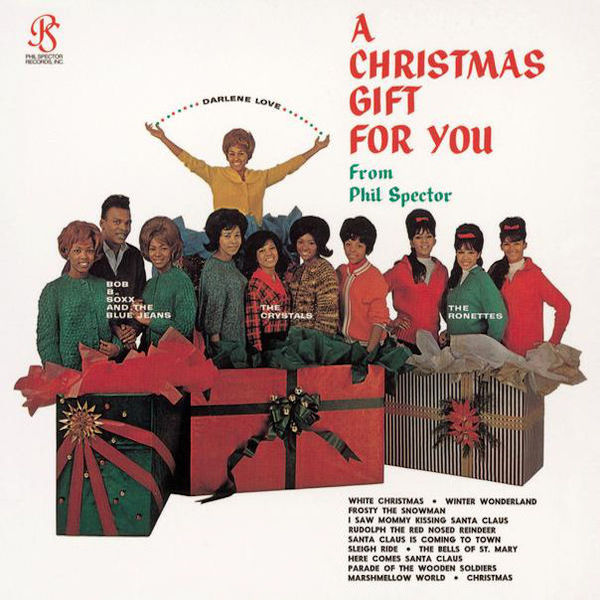
“Marshmallow World”
29
Somewhere between the sun shining “red like a pumpkin head” and the “marshmallow clouds being friendly,” winter scenery takes a Dadaist turn on “Marshmallow World,” Carl Sigman and Peter de Rose’s placid 1949 standard that has seen many singers. (Dean Martin recorded a particularly bleary take in 1966, sounding far more invested in the ice inside his highball.) Darlene Love’s version is the snow that sticks; her cover is a gleeful, snappily paced tour through a holiday fantasia, a pastoral scene of gleaming snowmen, rosy cheeks, and mitten-clad hands clasped together during aimless strolls.
Phil Spector’s Wall of Sound production is at its most formidable here, dexterously stacking saxophones and girl-group harmonies under Love’s divine, full-bodied vocals. She delivers even the more syrupy lines (“It's a yum-yummy world made for sweethearts/Take a walk with your favorite girl”) with unapologetic brass. It's a treat. –Stacey Anderson
Listen: Darlene Love: “Marshmallow World”
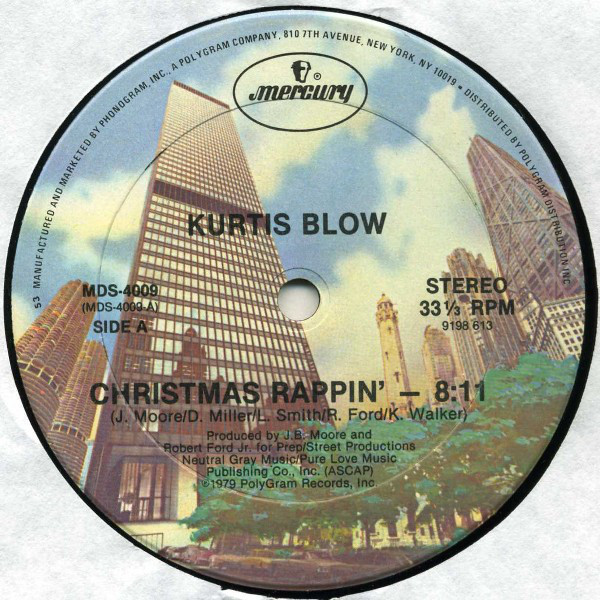
“Christmas Rappin‘’
28
Major label executives were slow to recognize rap’s sales potential. So in 1979, with test pressings of Kurtis Blow’s “Christmas Rappin’” in hand, the promoter and producer Russell Simmons came up with a fresh strategy: Once early copies had won over area DJs, Simmons encouraged the community to place “fake orders” for the single. “PolyGram didn’t own it yet, but we created an appetite for ‘Christmas Rappin’’ that led them to buy it,” he recalled. The result: a gold record.
Over a disco-infused beat, Blow interrupts a standard presentation of “‘Twas the Night Before Christmas” to present an image of Santa Claus as a b-boy: “‘But can you stop for a drop before you go?’/He said, ‘Why not if the music's hot?/And I'll chance a dance beneath the mistletoe.’” The surprised partygoers in Santa’s vicinity all get presents, but the Harlem MC also makes a communitarian pitch: “Cause money could never ever buy the feeling/The one that comes from not concealing/The way you you feel about your friends.” The track’s importance in hip-hop’s earliest commercial days is reflected by Public Enemy’s sampling of the track, but “Christmas Rappin’” also stands up on its own as a genuine work in tune with the holiday spirit. –Seth Colter Walls
Listen: Kurtis Blow: “Christmas Rappin’”
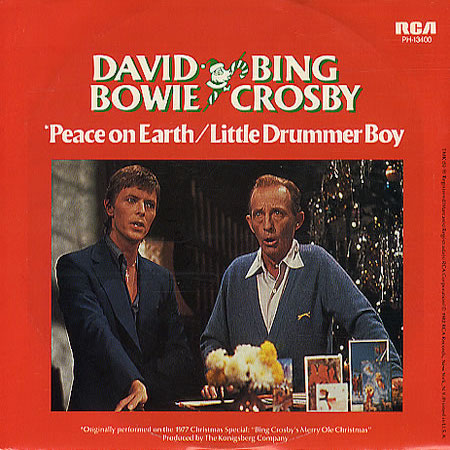
“Peace on Earth/Little Drummer Boy”
27
In the late 1960s, while David Bowie was an unsuccessful jobbing actor, many of his familiars made the leap to primetime television—including his onetime fling, Lulu, and his idol, Scott Walker. So when Bowie emerged from the cocaine hell of his Thin White Duke period and sought to normalize his career around 1977, it wasn’t too surprising to see the avowed light entertainment enthusiast appear on a Christmas TV special—the pop star’s equivalent of volunteering at an old folks’ home to atone for past sins. But only Bowie had the star power to align himself with America’s premier holiday statesman, Bing Crosby.
Although Bowie was not dreaming of a white Christmas that year, he still balked at the Crosby show producers’ tepid initial pitch that he sing “Little Drummer Boy.” Within an hour, they came up with the “Peace on Earth” interpolation, in which Bowie swoons traditional Christian messages (“Every child must be made to care/Care enough for his fellow man”) over Crosby’s reedy “pa-rum-pa-pump-pum”s. The result is a gigantic Christmas ham preserved in a brine of surreality, the brief flare of the 20th century’s first great multimedia star aligning with its last. (It’s no baton-exchange, though: Hark at Bowie’s other turn on the show, when he performs ““Heroes”” solo, caressing his skinny jumpsuited body while squeezing his very defined buns.) Five weeks later, Crosby died, and Bowie continued his march towards the mainstream. –Laura Snapes
Listen: David Bowie/Bing Crosby: “Peace on Earth/Little Drummer Boy”
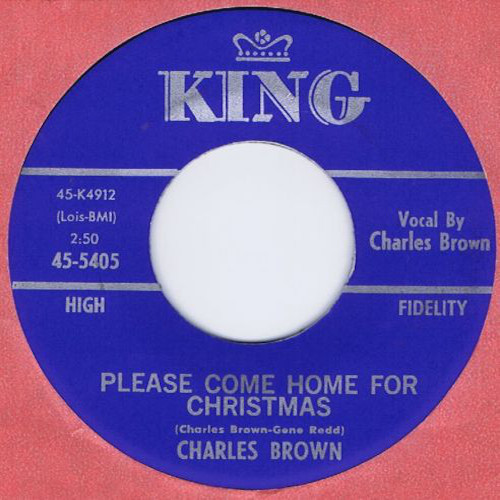
“Please Come Home for Christmas”
26
Having Bon Jovi, the Eagles, and Kelly Clarkson cover your tune is good for the wallet. Also having Willie Nelson, B.B. King, Fats Domino, and James Brown tackle it means that you’re onto something universal—namely, that the holidays really suck sometimes. The Texas piano man Charles Brown exploded onto the national blues scene in the mid-’40s with his easygoing style; after a string of somber hits, Brown’s luck dried up until “Please Come Home for Christmas,” a final stab at the spotlight that paid dividends.
Here, Brown gives us a blue Christmas as smooth and strong as spiked eggnog; starting with a trio of bell peals, Brown delivers beautifully aching verses (“Choirs will be singing ‘Silent Night’/Christmas carols by candlelight”) over bouncy, sock-hop piano. And his pleas are reasonable, really: Maybe his baby won’t make it home for the tree, but could she please try for the New Year? With its gorgeous, rolling guitar at the close, and the bells popping up intermittently to boost spirits, “Please Come Home for Christmas” makes an irrefutable case. –Jason Gross
Listen: Charles Brown: “Please Come Home for Christmas”
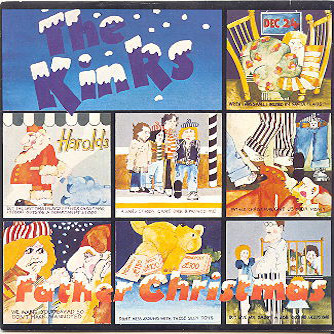
“Father Christmas”
25
The Kinks unleashed “Father Christmas” in 1977, right in the middle of the punk revolution. Ray Davies wasn’t really a punk sympathizer—the single’s flip, “Prince of the Punks,” is a broadside against Tom Robinson, the punk rocker who reportedly offended the Kinks leader once in a club—but this holiday track is as insurrectionist as seasonal songs get, a rallying call for all the poor kids who get nothing at Christmas. Davies’ narrator isn’t part of the pack that mugs a department store Santa Claus, demanding money instead of silly toys; he is Santa Claus, a guy who opens the song by admitting, “When I was small I believed in Santa Claus/Though I knew it was my dad.” Such glad tidings are erased once he’s swarmed by a gang that doesn’t want presents, just the means to survive.
Davies’ sympathies clearly lie with these louts as he pleads, in the bridge, “Remember the kids who got nothin’/While you’re drinking down your wine.” His stance also pulses through the music itself: “Father Christmas” may open with bells that twinkle as brightly as newly fallen snow, but it soon descends into nasty, furious, frustrated rock’n’roll. Together, it becomes the rarest of things: a Christmas song that’s also a protest anthem. –Stephen Thomas Erlewine
Listen: The Kinks: “Father Christmas”
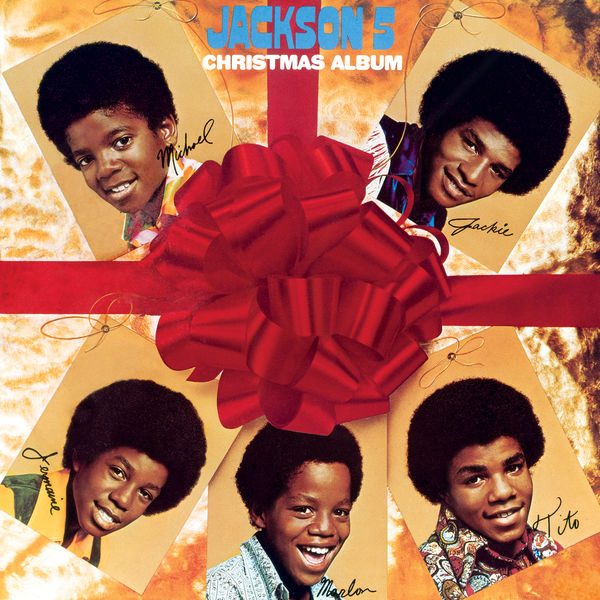
“Santa Claus Is Coming to Town”
24
Since it debuted on Eddie Cantor’s radio show in 1934, “Santa Claus Is Coming to Town” has been covered by everybody from Perry Como to Kylie Minogue. It’s a testament to the Jackson 5’s funkiness and the precocious charisma of Michael Jackson that their Motown version is still a gold standard for anybody born after 1960. (If you need another testament, consider that the family band scored a hit with their version in 1970, a year in which they had already released two wildly popular albums.) Both elements of their musicality are equally important: The Jackson brothers freshen the song with a sophisticated funk arrangement that stands up to giants of the era like Sly & the Family Stone, giving it life without ever crossing in dated or gimmicky showmanship. Still, it’s the sheer youthful joy of 12-year-old MJ’s irrepressible vocals that’s made this a true classic and a guaranteed cure for seasonal blues. –Edwin “STATS” Houghton
Listen: Jackson 5: “Santa Claus Is Coming to Town”
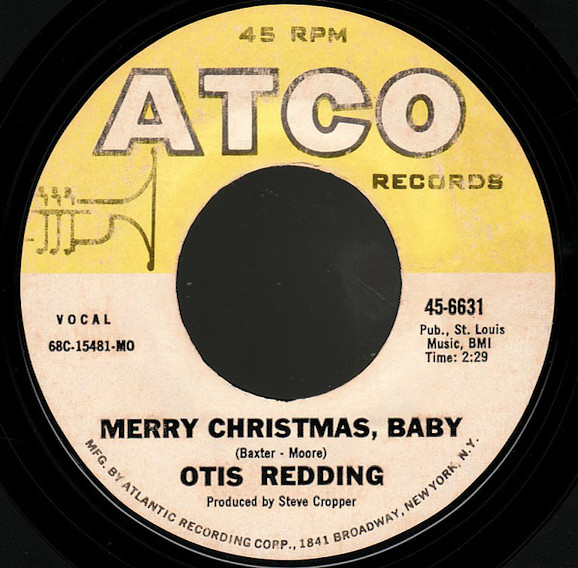
“Merry Christmas Baby”
23
“Merry Christmas Baby” was first written and performed by Johnny Moore’s Three Blazers in 1947, lined with twinkling piano and bluesy guitar chords. A slow-burning R&B ballad, the song places its subject at the center of a cozy, loving Christmas morning, surrounded by gifts and standing beneath the mistletoe. It has been covered countless times since, by Chuck Berry, Bruce Springsteen, Elvis Presley, Etta James, and even Hanson.
But no artist has re-imagined its melodies or its spirit quite like Otis Redding, who changed the key and kicked up the tempo, turning “Merry Christmas Baby” into a jaunty, sleigh bell-accented ditty while maintaining the blues at its core. Redding’s rendition of the song has an entirely different tone than its predecessors, one that is much more lively and gleeful. It’s more in keeping with the lyrics, which are filled with reverence: “Everything here is beautiful,” he sings. As trumpets blow triumphantly at his back, his husky timbre strikes a precise balance between inspired and gloriously overwhelmed; it just feels merry, and then some. –Sheldon Pearce
Listen: Otis Redding: “Merry Christmas Baby”
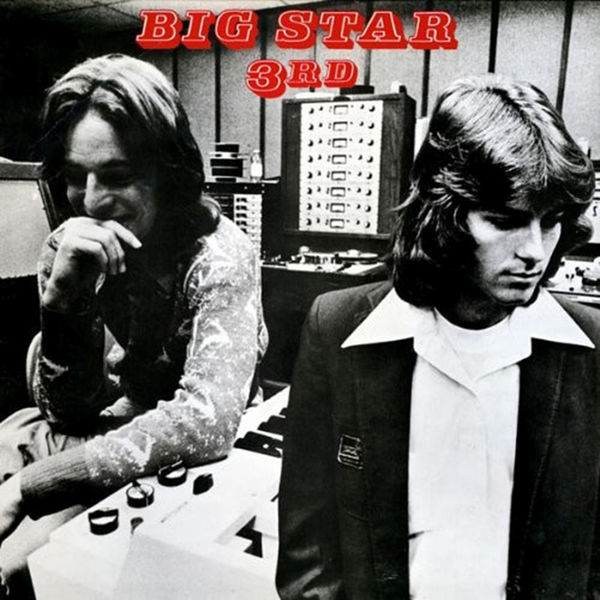
“Jesus Christ”
22
It’s easy to miss the subdued yuletide cheer of Alex Chilton’s “Jesus Christ”—it’s nestled between vulnerable and hook-filled proto-indie tracks on Big Star’s Third/Sister Lovers. Written in part as a reply to former Big Star member Chris Bell’s born-again Christianity, the song doesn’t take its name in vain; it treats its subject with the same laid-back Memphis reverence and somber devotion as the cover of the Velvet Underground’s “Femme Fatale” that followed it on the original 1978 release, a few years after the band disintegrated. With sleigh bells entering ambiently during the first chorus, echoing kettle drums, and a sax solo taking it home, the song is one experiment in an album full of them, providing a genetic connection to Phil Spector’s big beat holiday productions and Chilton’s own fast-receding pop past. –Jesse Jarnow
Listen: Big Star: “Jesus Christ”
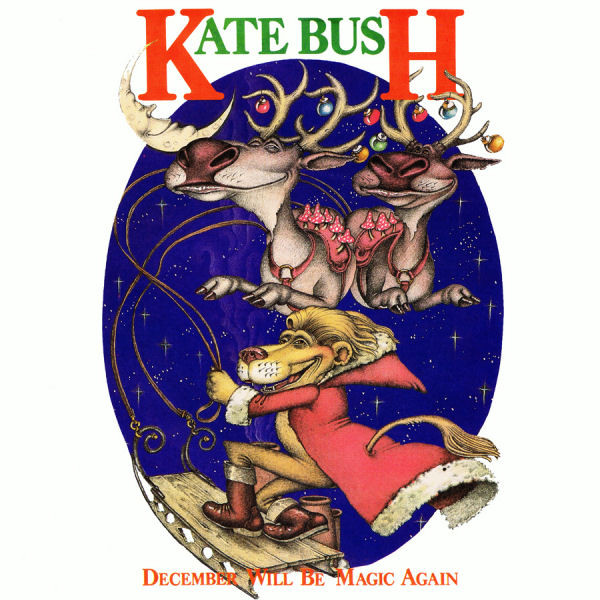
“December Will Be Magic Again”
21
At first gasp, “December Will Be Magic Again” feels like a puff of pure sentimentality, as Kate Bush ticks off a list of festive tropes that pretty much only ever existed on greetings cards. “Take a husky to the ice/While Bing Crosby sings ‘White Christmas’/He makes you feel niiiiiiice,” she trills, as kindly as a grandparent sending a kid off with a pound in their pocket. Bush first performed “December” while perched atop a red-and-gold throne on a 1979 BBC TV Christmas special, and then at the piano on her own broadcast, “Kate,” soon after. Back then, it probably felt like traditional pageantry nestled among the wilder parts of her burgeoning catalog—which it was, when you compare its lilting piano to the synth experimentalism of the next year’s Never for Ever.
But there’s more going on here than standard Hallmark cheer. It’s a reassurance: “December will be magic again.” Bush recorded “December” when she was 21 years old, roughly the age when it starts becoming impossible to summon the childlike wonder that Christmas once commanded. It was released in November 1980; since breaking out two years earlier with “Wuthering Heights,” Bush’s life had changed beyond recognition. There’s a measure of anxiety and anticipation in the skittish piano arrangement, which flits between major and minor chords, and in her luxuriant, clipped phrasing. She turns into a snowflake, beholding the white city from the sky, and marvels, “Oh see how I fall” with certainty, as if testing the weight of her footing. Still, despite Bush’s usual bravura vocals, “December” feels low-key compared to her previous singles, so it’s not a surprise that it only peaked at No. 29 in the UK. One of the explanations for its commercial failure: John Lennon was murdered three weeks after its release, though this song of sweetly cautious optimism could’ve lent itself well to those times. –Laura Snapes
Listen: Kate Bush: “December Will Be Magic Again”
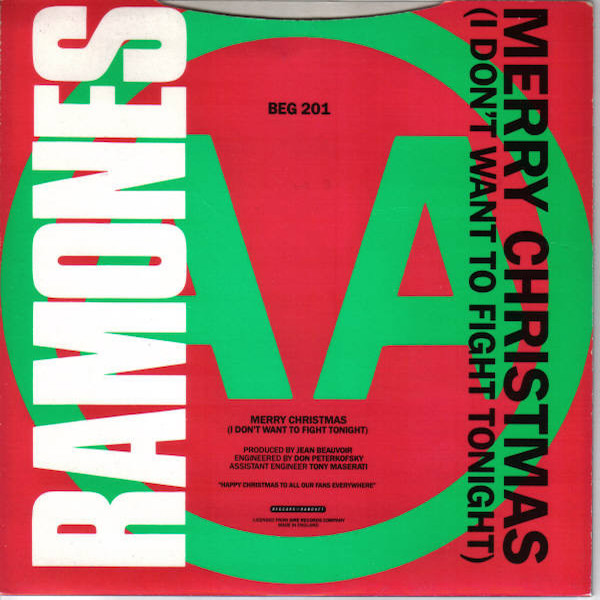
“Merry Christmas (I Don't Want to Fight Tonight)”
20
Those who reject the idea of Christmas don’t ask for much, which explains why this weird, late Ramones anthem resonates, even years later. “Merry Christmas (I Don’t Want to Fight Tonight)”—originally released as a B-side to the “I Wanna Live” single, a decade after Joey, Johnny, Dee Dee and Tommy began recording—is one of the best and brightest punk holiday classics, a scrappy, two-minute rock blast marked by Joey Ramone’s defeated, warbling tenor. “Where is Santa? At his sleigh?/Tell me why is it always this way?” Joey laments. “Christmas ain't the time for breaking each other's heart.” A slower, slicker version later appeared on Joey’s 2002 solo EP Christmas Spirit… In My House alongside a cover of “Christmas (Baby Please Come Home),” as well as on his 2012 album Ya Know? Both were released posthumously, and prove his holiday angst can still hit hard. –Liz Pelly
Listen: Ramones: “Merry Christmas (I Don't Want to Fight Tonight)”
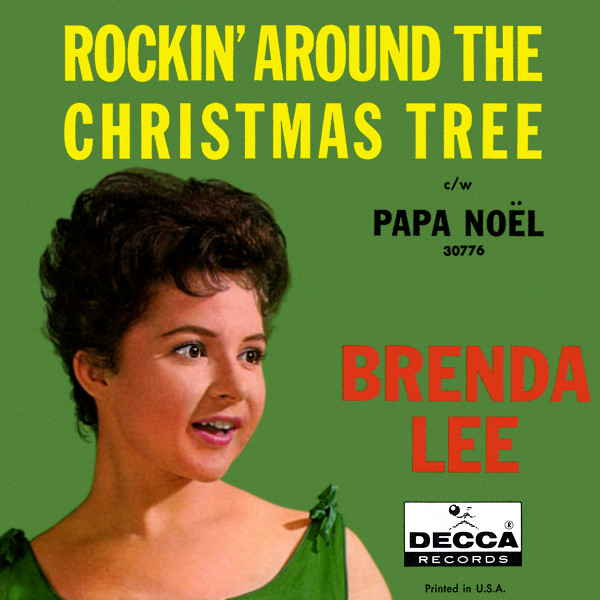
“Rockin’ Around the Christmas Tree”
19
After witnessing the huge success of “Jingle Bell Rock” in 1957, Johnny Marks—the composer behind “Rudolph the Red-Nosed Reindeer” and “A Holly Jolly Christmas”—became determined to create his own teenybopper Yuletide hit. He found its singer in Brenda Lee, then just 13 years old; her pipes on “Rockin’ Around the Christmas Tree” are confident beyond her years, sliding smoothly from a slinky shimmy to an all-out belt as she celebrates the holidays “in a new old-fashioned way.”
The 1958 sessions for “Rockin’” occurred in Nashville in July, with the air conditioning blasting and a Christmas tree set up for atmosphere. Backing Lee were Boots Randolph on sax, studio wizard Hank Garland on guitar, and the Anita Kerr Singers crooning harmonies. But even with its all-star creative crew, “Rockin’” was, by all accounts, a flop: It sold fewer than 5,000 copies worldwide the year of its release and sat largely forgotten until 1960, when it hit No. 14 on the Billboard Hot 100 charts (thanks to Lee’s growing teen idol popularity). “Rockin’ Around the Christmas Tree” was a fun and necessary bridge between traditional Christmas music and its rock future, less concerned with roasting chestnuts than drinking eggnog and boogying all night. –Quinn Moreland
Listen: Brenda Lee: “Rockin’ Around the Christmas Tree”
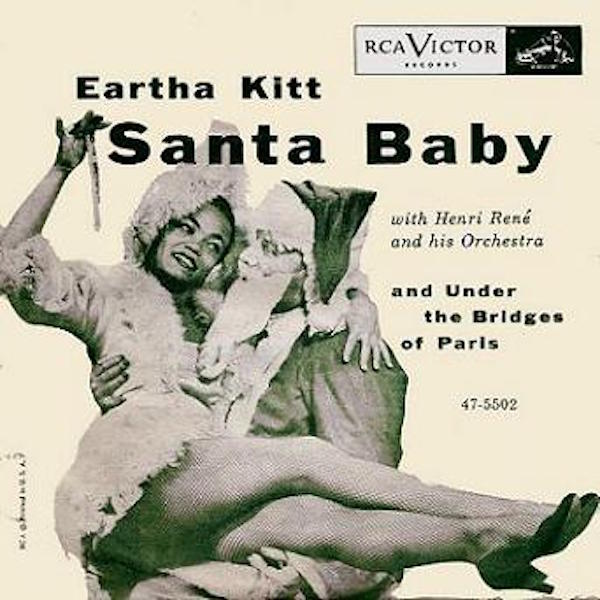
“Santa Baby”
18
It’s not exactly progressive to solicit Santa in a coy, babyish purr, bartering ostensibly good behavior for furs, rings, and a full-on “platinum mine.” (Plus, what is the long game on the latter—are you going to extract it yourself, girl? In the furs?) Still, Eartha Kitt is owed her due for one of the most entertaining Christmas standards of the 1950s, a tongue-in-cheek caricature of the holidays’ glittery consumptions that frolics between camp and sultriness. Kitt’s high lilt is awfully close to infantilized, but her smirking is audible in the bawdy euphemisms (“Come and trim my Christmas tree/With some decorations bought at Tiffany’s”). The low, opining ba-bumps of the male choir conjure images of rows of deferential suitors in dinner jackets, prostrating themselves at the divine Miss Kitt’s feet as she floats by haughtily. If she didn’t get her gift of glorious manipulation from Santa, she certainly sourced it from some other supernatural power. –Stacey Anderson
Listen: Eartha Kitt: “Santa Baby”

“Sleigh Ride”
17
Phil Spector gave Darlene Love plenty of quality songs to wail when he created the greatest holiday pop album of all time, 1963’s A Christmas Gift for You. But he didn’t forget to leave a few presents for Veronica Bennett, soon to be known as Ronnie Spector. “Sleigh Ride” is three minutes of the greatest glee to be found the annals of holiday music—or winter music, technically, since Leroy Anderson and Mitchell Parish’s chestnut never actually makes explicit mention of Christmas. The song gets its own halting, symphonic overture, essentially, complete with sleighing and neighing sound effects, before the Wall of Saxes kicks in and history’s most celebrated girl-group repeatedly sings the line that Parish forgot to include: “Ring-a-ling-a-ling-a-ding-dong-ding.” Bundled up or not, this innocent romp through the woods becomes rapturous before returning to an equally halting come-down of an ending—one in which the Wrecking Crew, seemingly a hundred violinists, a sleigh driver, Ronnie Spector, and you all crash, exhausted, into the snowbank of dreams. –Chris Willman
Listen: The Ronettes: “Sleigh Ride”
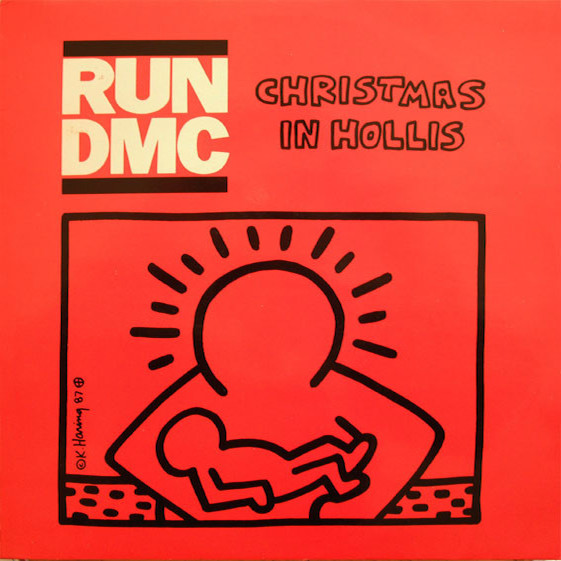
“Christmas in Hollis”
16
Run-D.M.C. didn’t want to make a Christmas song. They thought it would be corny, fake—a way for corporate America to sanitize hip-hop, to dismiss the genre as mere novelty just as the trio was helping turn it into a widespread commercial and cultural force. Plus, there already was a holiday rap staple—Kurtis Blow’s 1979 trifle “Christmas Rappin’,” also the first-ever hip-hop song released on a major label—and they didn’t want to be seen as piggybackers.
But then Jam Master Jay got ahold of the horny fanfare from a 1968 song called “Back Door Santa,” and a modern Christmas classic was born. The sampled track by Clarence Carter is about an especially randy Saint Nick (“I make all the little girls happy/While the boys are out to play,” the soul man crows, somewhat creepily), and its rawness makes “Christmas in Hollis” feel like a worthy addition to Run-D.M.C.’s harder-than-steel minimalism instead of a crass capitulation. With rhymes about returning Santa’s lost wallet and digging into Mom’s collard greens at the dinner table, the song is humble, unpretentious. It invites you in from the Queens cold. The equally legendary video reinforces this new kind of wintertime fable, giving life to a world where pit bulls wear antlers and dookie chains can be found under every tree. —Ryan Dombal
Listen: Run-D.M.C.: “Christmas in Hollis”

“I Wish It Could Be Christmas Everyday”
15
The look was pure glam-rock; the sonics, pure Phil Spector. Many have tried to recreate the Wall of Sound heard on his compilation A Christmas Gift for You, and nearly all have fallen flat. Yet Roy Wood, who in 1973 had just ditched the cellos of the Electric Light Orchestra, turned out to have a sure touch with multi-tracked saxes in this one-off homage to Spector.
In the history of Anglo/American inequities, there are few imbalances as unjust as the fact that “I Wish It Could Be Christmas Everyday” is ubiquitous in the UK and an eternal non-starter in the U.S. Even in England, it never surpassed No. 4, yet it returned to the charts in the ’80s and again in the 2000s and 2010s. It also gets covered often by pop divas like Kylie Minogue, and almost always awfully, since the tune turns deeply cloying when you lose Wood’s Phil-harmonic homages yet keep the climactic children’s choir. Still, the sights in the original video—featuring a bunch of scarily face-painted, prog-rock glamsters pulling off such a bubblegum track—is as eternal a Christmas gift as Spector’s own mother lode. –Chris Willman
Listen: Wizzard: “I Wish It Could Be Christmas Everyday”
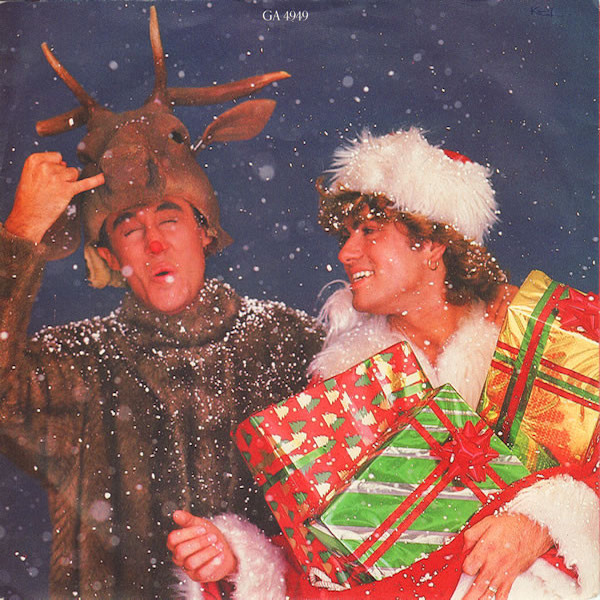
“Last Christmas”
14
In the 1980s, Wham! ascended to British pop’s highest echelons on a cloud made of hot air, hairspray, and naked ambition. As the miner’s strike raged and unemployment figures broke national records, George Michael and Andrew Ridgeley represented the smooth shamelessness of Thatcherite capitalism, which caused NME critic Ian Penman to declare them “more offensive than Jerry Lee Lewis, a suspected mass murderer.” Lambasting their lack of tone and gravity, he also accused them of “collaborating on 1984 as our Year of the Fake Tan.”
It’s both a fair comment and the perfect conditions to create a festive single that crystallizes the season’s guzzling sentimentality. Written in the time it took Ridgeley to watch an episode of “Match of the Day,” “Last Christmas” is as aggressively synthetic as a gust of polystyrene snow on an air-conditioned breeze. It’s a relentless, four-and-a-half minute burst of kitschy synths that ascend and then twinkle back down again like Escher escalators, looping nightmarishly between department store floors on Christmas Eve.
Michael’s lament for a careless gifter is feeble, but it’s also perfect: hurt and hopeful, matching his Lady Di bouffant with her doe-eyed coyness. “Once bitten and twice shy/ I keep my distance but you still catch my eye” is one of pop’s all-time great lines, a proto-Swiftian slice of wounded concision (obviously, she covered it in 2007). A 32-year mainstay of the season, “Last Christmas” has more than earned its nostalgia, though it has a renewed resonance these days. As British advertisers unleash earnest, big-budget Christmas commercials in an attempt to reframe shopping as an act of love, Wham!’s shameless pitch for gold feels like Old Testament honesty. –Laura Snapes
Listen: Wham!: “Last Christmas”

“Another Lonely Christmas”
13
Christmas is the loneliest time of year for many, but nobody wallowed in seasonal despair as beautifully as Prince. “Another Lonely Christmas” first appeared as the B-side of the single of “I Would Die 4 U” in November 1984, just after Purple Rain turned Prince into a supernova, but the compelling thing about the song is that it doesn't sound like the work of a superstar. It's the sound of a man wallowing in his own grief, living in a room so cavernous that every instrument echoes off the walls.
Sadness may lurk at the heart of “Another Lonely Christmas”—it finds a man mourning the death of his beloved, where the memories intertwine with the present so he can never move forward—but it's mitigated by Prince's eccentricity. Nothing in “Another Lonely Christmas” follows a familiar path: He remembers how his lover screamed because she hated the number nine, and now that she's gone, he drinks banana daiquiris until he's blind. Such details aren't precisely personal—this isn't confession, it's theater—but they're odd enough to give “Another Lonely Christmas” resonance. Maybe the story Prince is telling never happened, but as he pounds his piano and testifies, it certainly feels like it did. And as he wails, he creates an anthem for everybody who has ever spent Christmas alone, haunted by how things used to be. –Stephen Thomas Erlewine
Listen: Prince: “Another Lonely Christmas”

“Christmas Wrapping”
12
Back in 1981, the Waitresses’ Chris Butler wrote the real fairytale of New York. Overwhelmed by a hectic year and excessive festive social pressures, the female protagonist of “Christmas Wrapping” (embodied brilliantly by Patty Donahue) decides not to bother with the holiday, and in doing so gives herself the season’s must-have gift: “I just need to catch my breath/Christmas by myself this year.” For a song written by avowed humbug Butler under duress from ZE Records, “Christmas Wrapping” should be maudlin and obtuse. But thanks to his rare gift for crafting nuanced, modern female voices, Donahue’s role isn’t pitiful but self-possessed: She’s wry, honest, ambivalent but not cynical, and unwilling to supplant a taxing work schedule with an equally taxing party schedule. (Here, “the world’s smallest turkey” isn’t a stand-in for the world’s smallest violin.)
With its Kurtis Blow-meets-new wave vibe, “Christmas Wrapping” is New York to the core. Butler turns the street-corner brass band into squalling funk fanfare, and mirrors the city’s incessant sparkle with the Waitresses’ waterfall of percussion, which skews grimier than your average sleigh bell. Ultimately, Butler lets a little festive magic seep in by giving Donahue a happy ending. Her ship-in-the-night crush finally comes into port when she nips out for condiments on Christmas Day, leading to the kind of meet-cute that would define Nora Ephron’s big-city love letters a few years later: “You mean, you forgot cranberries, too?!” –Laura Snapes
Listen: The Waitresses: “Christmas Wrapping”
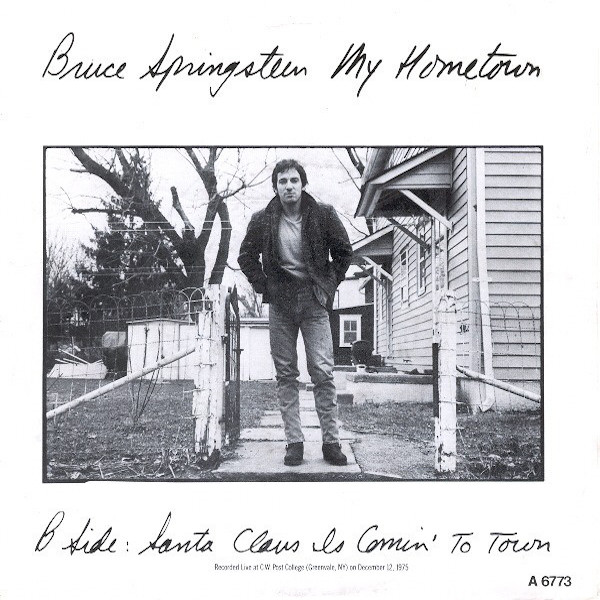
“Santa Claus Is Coming to Town”
11
Bruce Springsteen’s best-known Christmas tune was captured live at the end of a pivotal year. It was recorded during the tail-end of a set in front of 3,000 people at C.W. Post College in Long Island on December 12, 1975, four months after the release of Born to Run and one month after the show that became Hammersmith Odeon London ’75. Even then, his status as a legendary live performer was secure, and spontaneity is key to what makes his version of “Santa Claus...” so memorable.
Springsteen went to school on Phil Spector records while cutting Born to Run, hoping to capture some of the master’s symphonic drama, and somewhere along the way, he absorbed Spector’s A Christmas Gift for You. His arrangement of the song is loosely based on the Crystals’ take from LP and, complete with sleigh bells and glockenspiel, it suitably evokes the season. But the power of this take is in how it captures the feeling of friends goofing around onstage, from Springsteen’s opening ad-libs about the band being good and practicing to the vocal flubs to Clarence Clemons’ closing “ho-ho-ho”s. The Big Man’s enthusiasm with his Santa impression renders Springsteen breathless—he literally can’t sing because he’s laughing so hard, and the general good cheer of it all is utterly infectious. –Mark Richardson
Listen: Bruce Springsteen: “Santa Claus Is Coming to Town”
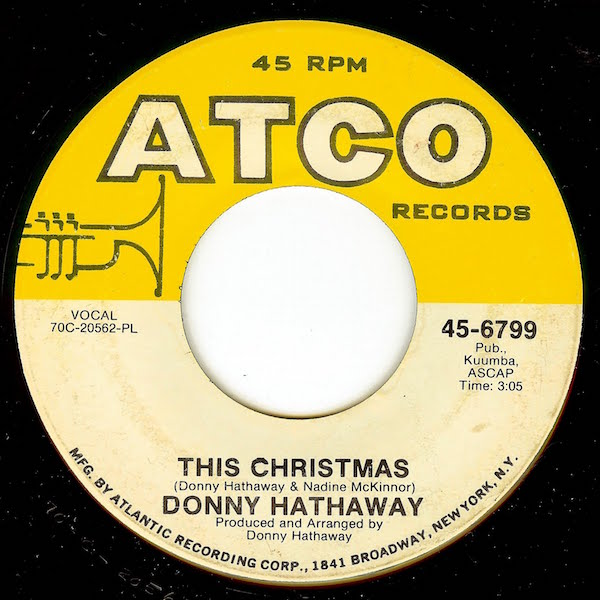
“This Christmas”
10
One of the best Christmas song traditions is being single-mindedly devoted to sex. The mistletoe, the eggnog, the holiday parties—from “All I Want for Christmas Is You” winsome all the way to “Baby, It’s Cold Outside” creepy, there is a long and glorious tradition of singers using the holidays as nothing more than a bald-faced excuse to strip off their Christmas sweaters. Donny Hathaway’s sly, swinging soul burner “This Christmas” is one such song, as under those sleigh bells there is more going on than innocent tree decorating: “We’re caroling through the night,” he sings. “This Christmas will be a very special Christmas for me.” It’s a hope, a wish, and a pick-up line all at once. –Jayson Greene
Listen: Donny Hathaway: “This Christmas”
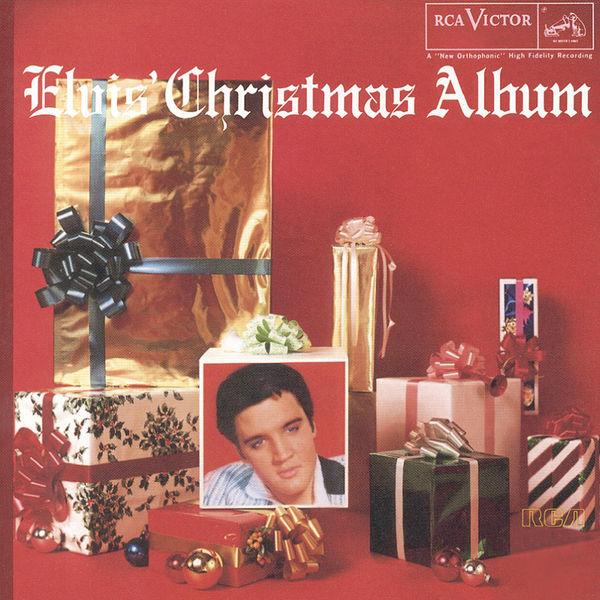
“Blue Christmas”
9
“Blue Christmas” was first recorded by Doye O'Dell in 1948, when Elvis Presley was 13. O’Dell played it as a straight country song, providing a blueprint for Ernest Tubb, who took the song to number one a year later. Only historians remember these versions, though, because Elvis Presley claimed it for good on his 1957 LP, Elvis’ Christmas Album.
Presley was the first singer to treat “Blue Christmas” as a blues jam, leaning into its simple changes and letting his backing singers, the Jordanaires, function as a choir, wailing away on the chorus. Whether on his first rendition or the live version from his 1968 comeback album, there's a swing to his rhythm, complemented by how Presley plays with the melody. Where O'Dell and Tubb treated the song as a sacred text, Presley pours himself into its pathos while also delivering something sexy and new. He may be on his own this Christmas, but his performance suggests that it’s his absent lover who’s really missing out. –Stephen Thomas Erlewine
Listen: Elvis Presley: “Blue Christmas”
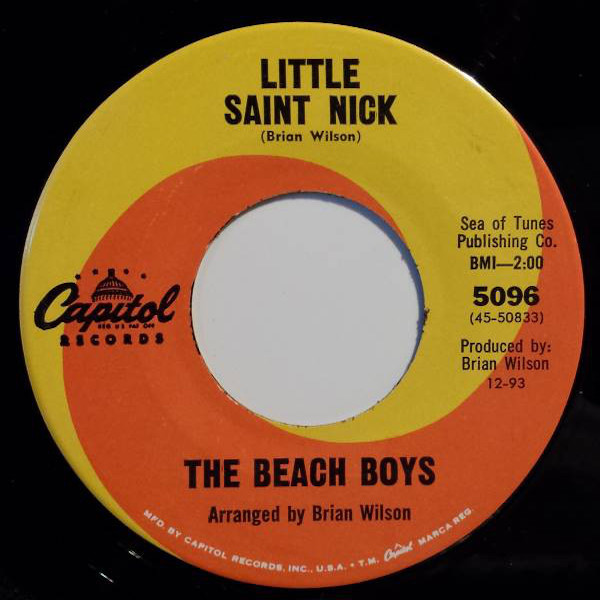
“Little Saint Nick”
8
In the summer of 1963, Brian Wilson played piano in sessions for A Christmas Gift for You From Phil Spector; his parts didn’t make the final cut, but the experience encouraged him to write a holiday tune for the Beach Boys. It became “Little Saint Nick,” a peppy jingle reminiscent in both structure and content to “Little Deuce Coupe,” the B-side released a few months prior. As co-written by Wilson and Mike Love, “Little Saint Nick” stands in for one of the Beach Boys’ preferred topics, a hot rod; it’s a candy-apple red sled that Santa whips through the snow.
“Little Saint Nick” offers a humorous, hip take on Kris Kringle, and it peaked at No. 3 on Billboard’s Christmas Chart, and its success encouraged the Beach Boys to record an entire holiday record the next year, The Beach Boys’ Christmas Album. “Little Saint Nick” received an update for the occasion, and its glockenspiel, celesta, and sleigh bells were removed. But in both versions, Love’s cheery vocals and Wilson’s bright falsetto of “Merry Christmas, Saint Nick” make Santa seem like one of the guys, even if the North Pole is a bit far from their shores. –Quinn Moreland
Listen: The Beach Boys: “Little Saint Nick”
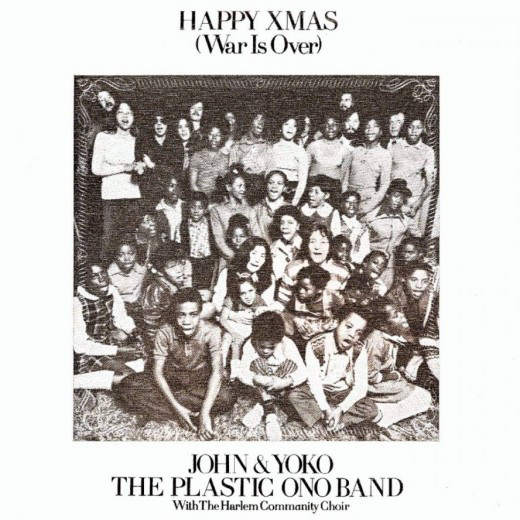
“Happy Xmas (War Is Over)”
7
Part Phil Spector-produced holiday spectacular, part conceptual political slogan, part classic John Lennon melody, “Happy Xmas (War Is Over)” was the ex-Beatle’s last non-album single and a classic in his and Yoko Ono’s discography of pioneering message-pop. A cap on a series of collaborations that combined Ono’s instructional art pieces with Lennon’s rock résumé (“Imagine,” “Give Peace a Chance”), “Happy Xmas (War Is Over)” built on the tagline they’d used on a series of “War Is Over (If You Want)” billboards in 1969, and created something more enduring than any of the Beatles’ holiday efforts.
With the Harlem Community Choir delivering the ineffable counter-refrain, and Ono’s voice settled inside a Wall of Sound-approved lushness, the song’s radical bona fides might not be audible at first pass. “Put your political message across with a little honey” was how Lennon described the strategy; in doing so, he and Ono elevated a surrealist pop novelty to the realm of Christmas standard. –Jesse Jarnow
Listen: John Lennon/The Plastic Ono Band/The Harlem Community Choir: “Happy Xmas (War Is Over)”
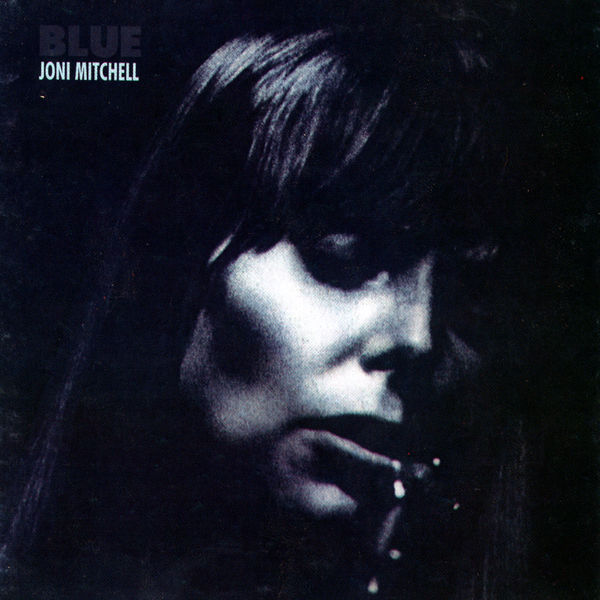
“River”
6
Who said holiday songs have to be happy? This composition from Joni Mitchell’s Blue is one of the most exquisite weepers ever to reference the Christmas season. In the piano introduction, Mitchell’s right hand rings out a melancholic adaptation of “Jingle Bells.” During the first verse, the narrator looks on sadly as reindeer displays are mounted. Where she comes from, winter brings rivers for skating—though in her present location, “it stays pretty green.” Her yearning for home, and more, is plain to hear; the pain only intensifies as she sings, in her highest register: “I wish I had a river so long/I would teach my feet to fly/I wish I had a river/I could skate away on.”
What a first-time listener doesn’t know just yet is that Mitchell’s narrator blames herself for this emotional devastation. After stepping down from that vocal high ledge, the same interval that Mitchell used for her “Jingle Bells” reharmonization appears once more in the piano part, a miserable full-circle that precedes her admission, “I made my baby cry.” And so the urge to get with society’s scheduled mirth crashes directly into her private agony. Anyone desiring an escape from their own inconveniently timed alienation can find solace in this wise and gorgeous song. –Seth Colter Walls
Listen: Joni Mitchell: “River”

“My Favorite Things”
5
“My Favorite Things” first appeared in Rodgers and Hammerstein’s 1959 musical The Sound of Music, and its status as a holiday song was solidified when Julie Andrews sang it in a 1961 TV Christmas special. In the year prior, John Coltrane recorded a version on soprano saxophone, his first time using the instrument in the studio; it would become his signature tune for the last six years of his life, the standard feature of his concert repertoire.
Live, Coltrane twisted “My Favorite Things” into all kinds of different shapes, eventually dispensing with tonality entirely in hour-long versions (check Live in Japan). But the studio version of the song has an understated, welcome tunefulness, and was accessible enough to be released in an edited version as a 7” single. McCoy Tyner’s delicate piano zeroes in on the see-sawing chords of the composition, creating a space for exploration but also a comforting tone that echoes the piece’s original setting as a song sung to children. And Coltrane’s careful but adventurous treatment of the melody, especially when the key jumps after the initial statement of the tune, is unfailingly gorgeous, the entire concept of peace on Earth rendered into sound. –Mark Richardson
Listen: John Coltrane: “My Favorite Things”
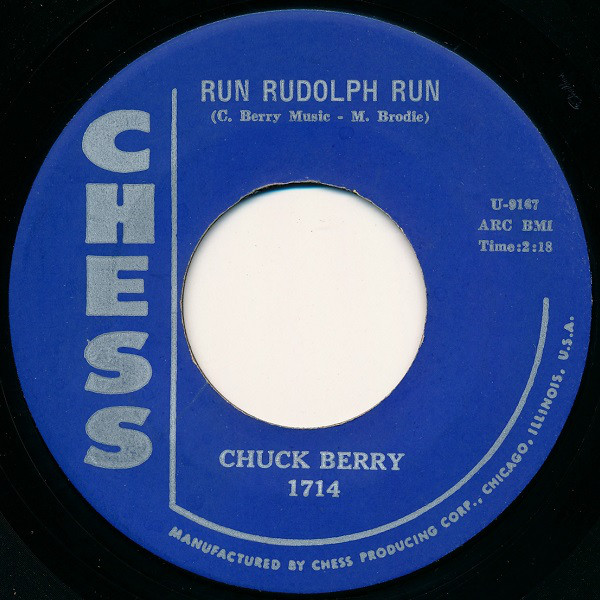
“Run Rudolph Run”
4
Melodically near-identical to “Little Queenie,” Berry’s hit the following year, “Run Rudolph Run” is a zippy, kindly singalong that captures the enthusiasm of the holidays without any saccharinity. Its fond nod to “Rudolph the Red-Nosed Reindeer” is not coincidental—Berry’s hit was cowritten by Johnny Marks, who also penned the original standard—and it was the first successful rhythm-and-blues spin on staid holiday fare.
“Run Rudolph Run”’s lean cheer has proven adaptable; it’s been covered by a stable of machismo-heavy rockers—Lynyrd Skynyrd, Keith Richards, Lemmy Kilmister with Billy Gibbons and Dave Grohl—as well as soundtracked such kid-friendly fare as Home Alone and Jingle All the Way. Berry’s yelps of “Run, run Rudolph, Santa's got to make it to town/Santa make him hurry, tell him he can take the freeway down/Run, run Rudolph 'cause I'm reelin' like a merry-go-round” are still delirious, decades on. *–*Stacey Anderson
Listen: Chuck Berry: “Run Rudolph Run”
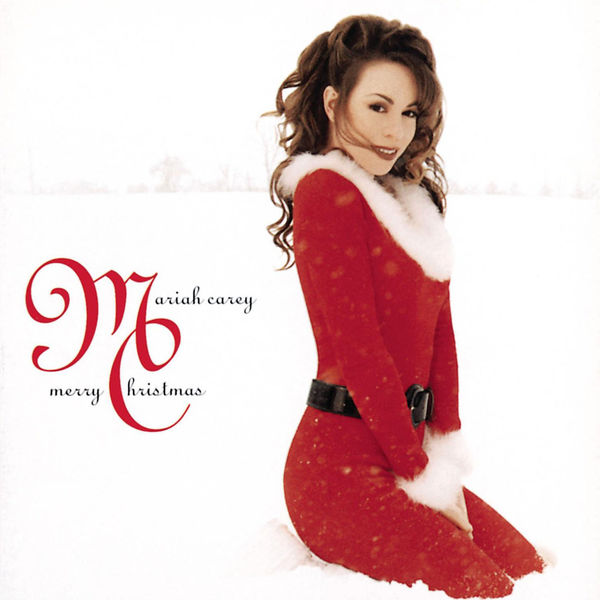
“All I Want for Christmas Is You”
3
Few artists who've come to prominence since the 1990s have the range to come up with a new Christmas standard. Meaningful covers of holiday classics? That’s easier. But to make something that lasts more than a few seasons takes confidence, a genuine embrace of the Christmas spirit, lyrical universality, and the kind of self-regard that can stare cheesiness in the face and say, “I don’t know her.” Which is how Mariah Carey, Patron Saint of Having the Range, pulled it off two decades ago.
Carey co-wrote “All I Want for Christmas Is You” with longtime collaborator Walter Afanasieff for her first holiday album, Merry Christmas. The track is deliriously uptempo, putting Carey’s powerhouse vocals front-and-center. The vibrato is pure ’90s pop-R&B, but it’s the song’s wink toward Motown—the Ronettes-style backup singers, in particular—that makes it timeless, and helped it become one of the best-selling singles of all time, in any genre. Even its grating inclusion in Love Actually couldn’t topple its holiday supremacy. And though that track has been played ad nauseum from Halloween to New Year for so many years, “All I Want for Christmas Is You” still enjoys the distinction of being one of the few modern holiday songs that won’t actually make you nauseous. –Cady Drell
Listen: Mariah Carey: “All I Want for Christmas Is You”
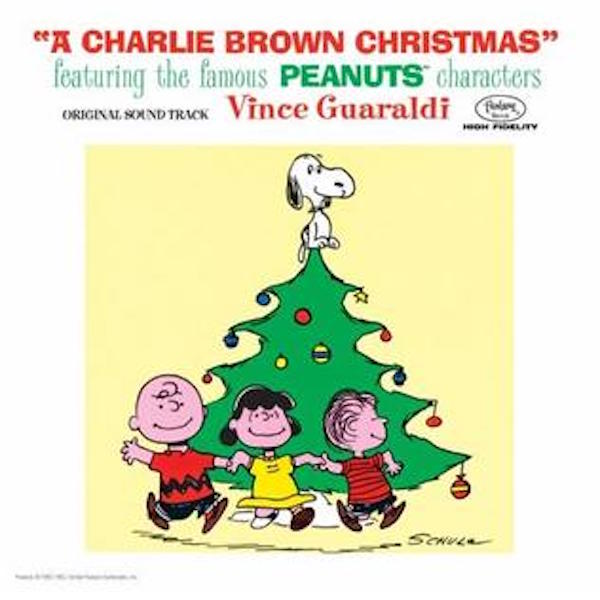
“Christmastime Is Here”
2
Most classic Christmas music dates back to WWII, when the human race seemed doomed for extinction. This is why the most enduring holiday songs come with a cold tendril of dread curling around them—that “I’ll be home for Christmas, but only in my dreams” foreboding, meant to make soldiers stationed abroad weep onto their stationery.
Vince Guaraldi’s “Christmastime Is Here” sounds like crippling depression set amongst cheer, which is why it stands tall in this haunted canon. Whatever your religion or creed, everyone in America walks among the Christmas industrial complex—the gleaming phalanx of stars, tinsel, and boughs of holly dangling from every retail surface and beaming out of every shop window. There is no holiday sentiment more universal than suspecting you should feel more cheerful than you do, fearing that others are huddled in warmth while you stand in the cold. That’s what this children’s choir sighing “snowflakes in the air” tells us, deep in our bones.
“Christmastime Is Here” began its life as a soundtrack to A Charlie Brown Christmas, another piece of art that snuck existential dread into our holiday pablum. But that leisurely, blue note-inflected line has transcended its association with the Peanuts gang and become a stand-in for the holiday season’s familiar, reassuring melancholy. We smile while ignoring the tug of loneliness, the pain that reminds us tomorrow won’t be Christmas anymore. Oh, that we could always see such spirit through the year. –Jayson Greene
Listen: Vince Guaraldi Trio: “Christmastime Is Here”

“Christmas (Baby Please Come Home)”
1
Holidays are often best experienced in hindsight. Looking back, the snow is pristine (instead of just cold), the family is endearing (instead of just combative), and the turkey is juicy and flavorful (instead of just overcooked and bland). These gilded memories are comforting, but they usually can’t help but give way to the sobering reality we feel each December.
This dynamic is a driving force behind 1963’s “Christmas (Baby Please Come Home),” in which all the happy tokens of the season only serve to remind Darlene Love of what she’s missing. Originally featured as the sole original on the compilation album A Christmas Gift for You From Phil Spector, the song started off as a rock’n’roll anomaly amid hymn-like standards such as “Silent Night” and “White Christmas.” More than a half-century later, the song is iconic; everyone from U2 to Mariah Carey to Death Cab for Cutie has taken it on, though none have bested Spector and Love’s overwhelming first take.
“Christmas (Baby Please Come Home)” was not an instant success, though. It was originally released on November 22, 1963—the day John F. Kennedy was assassinated—and didn’t make much of a splash. But over the years, its stature has grown, spurred on by a re-release of A Christmas Gift for You on the Beatles’ Apple Records in 1972—as well as a nearly 30-year run, from 1986 through 2014, when Love belted out the song annually on David Letterman’s late-night shows. According to lore, Letterman is something of a Scrooge, but he always had a soft spot for “Christmas (Baby Please Come Home),” and it’s easy to see why. The song recognizes the sadness of the season, but Love finds a way to rise above through her longing—in her roaring delivery, joy brings sorrow, which brings more joy. Her plea is simple. And, as long as there are Christmases to remember, it will not be forgotten. –Ryan Dombal
Listen: Darlene Love: “Christmas (Baby Please Come Home)”
Contributors: Stacey Anderson, Ryan Dombal, Cady Drell, Stephen Thomas Erlewine, Jayson Greene, Jason Gross, Edwin “STATS” Houghton, Jesse Jarnow, Quinn Moreland, Sheldon Pearce, Liz Pelly, Mark Richardson, Ryan Schreiber, Laura Snapes, Seth Colter Walls, Chris Willman








